- List of Theories
- Privacy Policy
- Opt-out preferences

The 7 C’s of Effective Communication – Explained with Examples
An effective communication takes place when the message sent across by the conveyer is clear and easily comprehended by the receiver and relevant response is fed back to the one who conveyed the message and the flow continues similarly.

Source: Kurhan/Adobe Stock
Although communication takes place at all times, if it is done effectively is a matter of dispute. For the most part, people don’t communicate efficiently, and this has been one of the predominant contributors to interpersonal conflicts.
Lack of proper listening, psychological conditions, poor comprehension skills, absence of mind, ambiguity in the message conveyed, and improper usage of words are some of the most frequently occurring mistakes during conversations.
So what makes communication effective? What are some of the tips and strategies that can be applied when communicating in general?
We are constantly in touch with people, texting, sending emails, creating reports, attending conferences and whatnot. So how can we scale up our communication game? What would make us stand out and seem distinctive in this world swarming with competitors?
The 7 C’s of Effective Communication
The 7 C’s of communication is an excellent strategy formulated by Scott Cutlip and Allen Center in the year 1952 in his book “Effective public relations”. This came to be utilized by people across the globe and is one of the most operative strategies used to date.
It involves the following C’s:
- Completeness
- Correctness
- Conciseness
- Consideration
- Concreteness
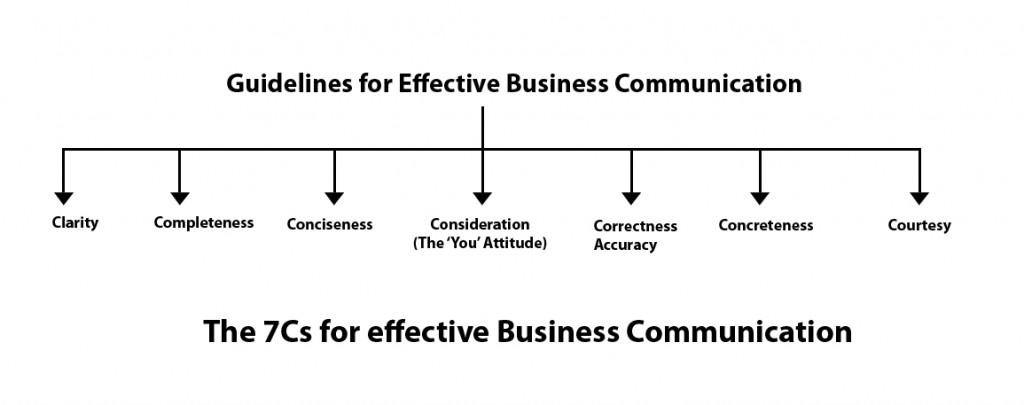
These strategies apply to both written and oral communication . The one who is aware of and makes use of these 7C’s in a sensible manner can become a good and effective communicator.
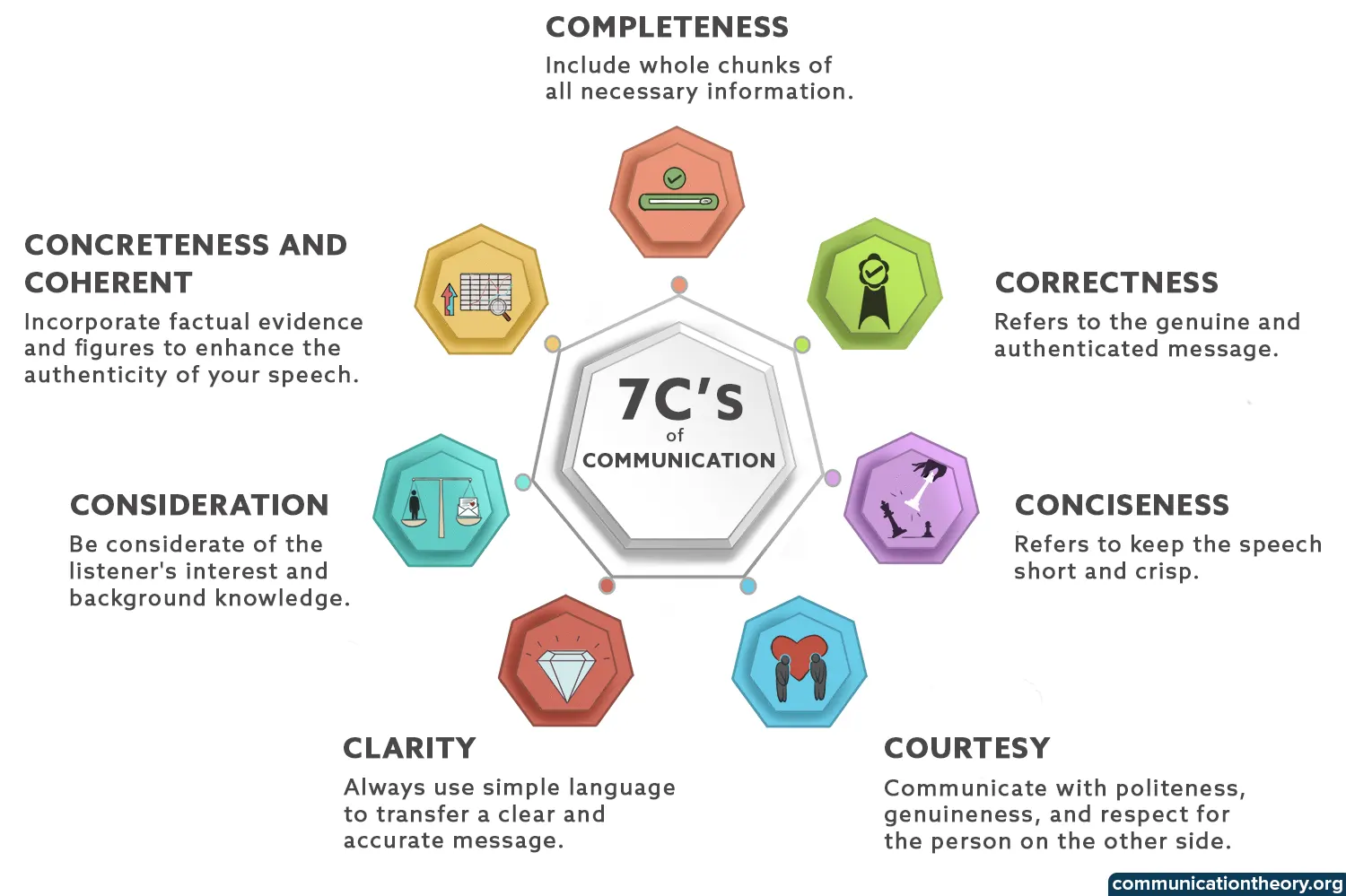
1. Completeness
This is one of the most significant aspects of effective communication . Completeness refers to giving full information about something rather than just saying it in bits and pieces. It’s the right of the recipient to receive access to the whole chunk of information to be able to follow the sender’s line of reasoning in regards to the matter being discussed.
For example, when Peter told “write a short passage on data science and send me”, Shawn couldn’t understand the context whatsoever. He had too many questions in his head about the topic, its length and the style of writing, where this piece of writing go etc.
Instead, Peter could frame his instructions as “Shawn I want you to write a 100-200 word short essay on the recent trends in data science. Submit it to me by the end of this day. I need it for our blog.”
Completeness holds much higher salience during the delegation of tasks when the subordinates need detailed instructions to pursue a task at hand.
2. Correctness
The genuineness and the value of your speech lie in its correctness and authenticity. It’s better to keep quiet rather than talk about something that you aren’t so sure of. The correctness of the speech would reflect directly on your personality and so it should be given utmost prominence.
The legitimacy of the factual information, the language used and grammar are some of the aspects of correctness amongst others.
If your audience spots any errors or blunders in your speech, it is no longer valued and they are likely to be distracted. The credibility of the speaker would also receive a massive hit and therefore the effectiveness of the communication will be compromised.
Related: Language Barriers
3. Conciseness
Conciseness is to keep the speech short and crisp. Nobody likes listening to someone who delivers long and draggy speeches because people lose interest and attention very easily. When interacting or delivering the speech, the ultimate objective is to make sure that the message is received in its intended form. Lack of conciseness will lead to the loss of essence in the content. Make sure to keep your speech brief and precise.
For example,
Intended message: “could you please receive Amanda from the airport?”
Delivered method: “Yesterday was a tiring day. Last night I couldn’t sleep properly. My wife has severe migraine and she’s down. I couldn’t have breakfast in the morning and I am tired. Amanda has taken her flight from Indonesia last night. She would reach here in some time. It would be nice if someone could pick her up from the airport.”
In this example, the message was simple. Yet, the sender makes it seem complicated and leaves the recipient feeling puzzled, irritated or exhausted. Also, he may deny the request. Such delivery of a message makes the message lose its value.
Related: Semantic Barriers
4. Courtesy
Courtesy refers to communicating with politeness, genuineness and respect for the person on the other side of the conversation. It will naturally scale up the value of communication. Courtesy is a tendency which stems out of empathy for people.
To be courteous doesn’t mean just use polite, magical phrases like “thank you”, “sorry”, “please” and “excuse me”. It also means to be honest, respectful and empathetic of people and not make sarcastic or any other form of passive-aggressive remarks.
One classic example would be from the infamous movie “Mean Girls” where Regina would tell a fellow classmate about how she loves the skirt she was wearing. As the girl leaves, Regina would tell her friend Cady how that was the ugliest skirt she has ever seen. This is an example of how you should not communicate.
In many instances, people use the power of their intellect and status to belittle the plight of others. This is so especially among those who bully the perceivably weaker ones for their timidity, racial backgrounds, gender, and color among many other aspects.
The global star Priyanka Chopra narrates in an interview about her high school days when she was severely bullied by her schoolmates. She was called names like “brownie” for her skin color and her ethnicity so much so that she was forced to have lunch inside a toilet cubicle.
Related: Assertive Communication
Clarity is to transfer accurate and easily comprehendible messages to the receiver. Before choosing to talk, be clear about your goals for the conversation. Let the other person know what your objective is for the interaction. To make your speech clear, always use simple language rather than using intricate phrases that would make comprehension difficult.
The recipient shouldn’t be made to “read between the lines”. Even if the content is complicated in nature, try to divide your ideas, distill it and make it as simple and clear as possible as that would make it easy for the receiver to grasp the information well.
6. Consideration
Consideration is quite similar to that of courtesy. It means to consider the other person and to address them putting you in their place. In other words, you talk to someone in a way you would want someone to talk to you.
For example, if you prefer someone to talk to you with respect and politeness, you would exhibit the same behaviors towards others. Just as that of courtesy, one should be inherently empathetic to be able to show consideration for the other person. When you are considerate, you sincerely regard people’s interests and benefits.
To be considerate also means to acknowledge the situational factors of the audience that you address. If you are going to give a talk on astrophysics amongst a bunch of seven-year-olds, the only response you would receive would be the sound of yawning and snoring; maybe even a giggle here and there if you’re lucky.
So when you talk to someone, remember to acknowledge their background such as their age, language proficiency, culture, literacy level, mental state, character, interests etc. so that you may be relatable to your audience and your intended message reaches them successfully.
7. Concreteness
Concrete communication denotes your message being specific, meaningful and focused. You don’t beat around the bush to get to a point. Rather it is solid and concise. You avoid vague and ambiguous messages and only strive toward making your information well received by the recipient. Your speech is crisp yet brimming with beneficial information. You incorporate factual evidence and figures to enhance the authenticity of your speech.
For example, when you say “Depression is a global issue”, you don’t just bluntly make that claim but also pitch in the statistical values and empirical evidence to support your statement.
And now, for your upcoming presentations make sure to follow these strategies and show up your confidence. These effective strategies may take you to the place of success at your workplace.
Best of luck!
Related Posts:
- Active Listening Skills - Techniques And Tips To Practice It
- Conflict Management - Skills, Styles And Models
- Various Types Of Communication Styles - Examples
- Most Important Social Skills - Explained With Examples
- Non-Verbal Communication
- Effective Listening Skills
these are the best or very good note that helps me in hawassa university while learning the business communication.
Assalamaoalikum ! Sir please give me full detail in one by one …thankyou
do you have complete intodution to 7Cs of effective bussiness communication?
I want to get detail of these seven c’s .Thank you
please whould you like to send thise cs in detail
please so the detail of 7c’s thanks …………………………………………………..
plz give me more detail
give more detail but notes is best
plz give me defination of each c’s
kindly give the explanation of these C’s.
Good post thank
I want to know more about the seven c’s
This is very very helpfull in my exam Thank you so much for all your efforts. This is best and very simple to understand.
This is very helpful, thanks for your post.
Ma sha Allah very gud and informative…
Leave a Comment
Next post: Clarity/Clearness for effective business Communication
Previous post: Features of Business Communication
- Advertising, Public relations, Marketing and Consumer Behavior
- Business Communication
- Communication / General
- Communication Barriers
- Communication in Practice
- Communication Models
- Cultural Communication
- Development Communication
- Group Communication
- Intercultural Communication
- Interpersonal Communication
- Mass Communication
- Organisational Communication
- Political Communication
- Psychology, Behavioral And Social Science
- Technical Communication
- Visual Communication
Communication Theory

A Complete Guide To The 7 Cs of Effective Communication (With Examples)

In a world filled with tweets, statuses, likes, and shares, it’s easy to assume that we’re masters of conveying our thoughts and ideas.
But there’s a vast difference between speaking and actually communicating.
In this ever-evolving landscape of emojis and digital noise, effective communication has become an indispensable skill.
According to a survey finding , a 100,000-employee company can incur an annual cost of $62.4 million due to poor communication.
On the contrary, companies with effective communicators can have 47% higher total returns.

Learning how to communicate effectively is an essential skill in navigating this highly competitive business world.
In this blog, we will delve into the 7 Cs of effective communication to unravel their significance. From clarity and courtesy, we will equip you with the essentials of effective communication to leave an impact in business communications like meetings, presentations, and also in your personal life.
So, are you ready to unlock the secrets of effective communication?
Let’s dive in:
What is Effective Communication?
Benefits of effective communication, what are the 7 cs of effective communication, final thoughts.
Effective communication refers to the process of conveying information, ideas, thoughts, and feelings from one person to another in a clear, concise, and understandable manner.
Communicating effectively ensures your message is accurately understood by the recipient, leading to successful interaction between individuals or groups.

Effective communication is like the secret sauce that makes all your interactions and relationships juicier and more flavorful.
It’s the art of expressing yourself clearly and authentically while also being able to listen attentively and empathetically.
Effective communication can take various forms depending on the context and the medium used.
Here are some common forms of effective communication:
- Verbal Communication
- Written Communication
- Non-Verbal Communication
- Visual Communication
- Active Listening
- Digital Communication
- Public Speaking
Effective communication is a vital skill in various aspects of life, including personal relationships, professional settings, and social interactions.
You may want to check out our short video on Non-verbal communication:
Whether you’re conveying information, expressing ideas, or building relationships, following the principles of effective communication helps you communicate more effectively:
Here are a few benefits that show the importance of 7cs of communication:
- Understanding: Effective communication helps others understand your ideas, thoughts, and feelings more clearly. It reduces misinterpretations and promotes shared understanding between individuals.
- Stronger Relationships: When you communicate effectively, you build stronger and more meaningful relationships and cause healthier personal and professional interactions.
- Conflict Resolution: Effective communication allows you to express your concerns, listen to other perspectives, and find common ground. Persuasive speaking helps you find mutually beneficial solutions and promotes harmony.
- Increased Productivity: Clear and efficient communication enhances productivity in various settings. By conveying instructions, expectations, and feedback effectively , you minimize errors and improve workflow efficiency.

- Improved Decision-Making: When communication is clear and open, decision-making becomes more informed and effective. Access to relevant information, diverse viewpoints, and constructive discussions enable better decision-making processes.
- Professional Success: Soft skills are one of the essentials of business communication and are highly valued in the professional world. Effective communication helps you articulate your ideas, present yourself confidently , and build rapport with colleagues, clients, and superiors. It positively impacts your career advancement.

- Influence and Persuasion: By expressing ****your thoughts convincingly, providing supporting evidence, and appealing to emotions, you can inspire action and influence positive change. It is a valuable skill in leadership, negotiation, and public speaking.
- Personal Growth: Effective communication contributes to self-awareness. It encourages reflection, active listening, and empathy, allowing individuals to better understand themselves and others. Clear thinking promotes personal development and emotional intelligence.
Effective Communication For the Future of Work. According to a survey of recruiters , 94% agreed that employees who possess strong soft skills are more likely to be promoted. The LinkedIn APAC Future of Skills 2019 Report supports this finding and indicates that with the increasing influence of AI and automation, the value of soft skills is on the rise.

By honing your communication skills, you can navigate life’s challenges more effectively and cultivate meaningful connections with others.
Let’s now look at the 7 Cs of communication one by one.
Clarity is the most important characteristic of communication.
Clear communication means expressing your message in a way that is easily understood by the recipient. It involves using simple language, avoiding jargon or technical terms, and organizing your thoughts logically.
Clarity leaves no room for any confusion or misinterpretation of your message.
Your message should be straightforward and easily comprehensible.
Unclear communication:
Just a quick reminder about the meeting tomorrow. It’s important, so please make sure you’re prepared. Also, don’t forget to bring any relevant documents. See you there!
The email doesn’t mention the specific time, date. And it leaves confusion with the word “relevant documents”.
Clear communication:
I wanted to remind you about the quarterly sales meeting scheduled for tomorrow, May 20th, at 10 AM in Conference Room B.
The purpose of this meeting is to review our sales performance for the past quarter and discuss strategies for improvement.
In preparation for the meeting, please make sure to:
- Familiarize yourself with the sales data and reports for the past three months.
- Identify key trends and insights from the data.
- Prepare any relevant recommendations or suggestions for improving our sales performance.
Additionally, please bring a printed copy of your sales figures and any supporting documents that you believe would contribute to our discussion.
If you have any questions or concerns, please don’t hesitate to reach out to me.
Best regards,Kumar
This clear and detailed communication helps ensure that everyone is on the same page and well-prepared for the meeting.
To ensure clarity in communication:
- Avoid complex or technical terms and choose simple words
- Organize your information in neat and clean manner.
- Illustrate your points with examples, analogies, or visual aids.
- Pay attention to the tone of your message
Check out our video on why Clarity is important in communication.
Being concise means getting your message across in a clear and straightforward manner without using unnecessary words or information. It’s about distilling your thoughts and ideas into their most essential form.
Conciseness of the message refers to carefully selecting your words and arranging them in a way that is simple, to the point, and easy to understand.

Conciseness in communication ensures that your message is comprehended quickly.
When you ramble on, use filler words , or include too much unnecessary information, you risk losing your audience’s attention and diluting the impact of your message.
Remember, being concise doesn’t mean sacrificing important details; rather, it means prioritizing and presenting information in a streamlined manner.
Non-concise Communication: “Hey Neha, I wanted to talk to you about the upcoming project deadline. So, you know, we’ve been working on it for quite some time, and we’ve encountered a few challenges along the way. I think it’s important for us to take into account all the feedback we’ve received from the team, especially the issues they’ve raised about the budget allocation. Additionally, I believe we should also consider the potential impact of the recent market trends on our project’s success. So, what do you think?”
Concise Communication: “Neha, let’s discuss the project deadline. We need to address the team’s feedback on budget allocation and consider the impact of recent market trends. What are your thoughts?”
So, next time you communicate, think about
- how you can trim the fat from your message,
- get to the point,
- make it easier for others to understand and engage with what you’re saying.
Being correct means conveying accurate and reliable information without errors or misleading statements. Correctness in communication ensures the facts, figures, grammar, spelling, and other details are correct.
It is important to verify facts, use credible sources, and double-check information before sharing it. This applies to both verbal and written communication.
Humans are easily fooled by false information, and it spreads quickly.
According to a study from the MIT Media Lab , false information is 70% more likely to be shared on social media compared to true information. Misinformation travels farther and faster than the truth across all types of information.

Being correct doesn’t mean you have to be an expert on everything or know every single detail. It means that you take responsibility for the information you share and make an effort to provide accurate and reliable data or statements.
If you’re uncertain about something, it’s perfectly fine to admit it and offer to find the correct information later. It shows honesty and integrity, which are valuable traits in effective communication.

Imagine a colleague presenting a sales report in a meeting. They mention that the company achieved a 10% increase in sales last quarter. However, upon further investigation, it was discovered that there was a mistake in the calculations, and the actual increase was only 5%.
In this scenario, the colleague’s wrong information could lead to poor decision-making and misunderstandings within the company.
To ensure correctness in communication:
- Double-check any facts, figures, or details before communicating them.
- Review your communication for grammar, spelling, and punctuation errors.
- Avoid slang, jargon, or technical terms that might not be familiar to everyone.
- Stay informed about changes, updates, or developments related to your topic.
By prioritizing correctness in communication, we establish trust, credibility, and reliability in our interactions.
4. Complete
Being complete means providing all the necessary information and ensuring that your message is comprehensive and thorough. It’s about leaving no room for confusion or ambiguity.
To ensure completeness in communication, it’s important to provide all the relevant facts, details, and context that the recipient needs to fully grasp the message.
You also need to answer any anticipated questions or concerns that the listener may have.

Incomplete Communication: “We need to improve sales.”
This message is vague and lacks specificity. It does not provide any details or guidance on how to improve sales
Complete Communication:
“To improve sales, we should focus on increasing our online advertising budget by 20% for the next quarter. Additionally, let’s launch a targeted email campaign to our existing customer base offering a 10% discount on their next purchase. We should also provide additional sales training to our team members to enhance their product knowledge and customer engagement skills. Lastly, let’s explore strategic partnerships with complementary businesses to expand our customer reach and tap into new markets.”
To ensure completeness in communication:
- Determine what information needs to be conveyed or what action needs to be taken.
- Collect all the the key details, facts, data, and any supporting materials
- Organize the message in a logical and coherent manner.
- Review and revise for completeness before sending.
5. Consideration
Consideration in communication is about taking into account the needs, perspectives, and feelings of your listeners. It requires empathy and understanding, taking into account the specific circumstances, preferences, and concerns of your audience.

Doing an in-depth audience analysis is crucial for considerate communication.
You also have to be mindful of the timing and context of your communication. You consider whether it is an appropriate moment to bring up certain topics or if the person is in the right frame of mind to receive the message.
Consideration is not limited to face-to-face interactions—it applies to all forms of communication, including written messages, emails, and even social media posts.
Inconsiderate communication: “I need you to complete this report by the end of the day. It’s urgent and I don’t have time to wait.”
The message is abrupt, demanding, and fails to acknowledge the recipient’s workload or time constraints.
Considerate Communication:
“Hello, I hope you’re doing well. Could you please complete the report by the end of the day if possible? I understand you may have other tasks on your plate, but it would be greatly appreciated. Let me know if you need any assistance or if we can discuss the timeline further. Thank you!”
Here the message acknowledges the recipient’s workload and recognizes the need for flexibility by using phrases such as “if possible” and “I understand.” The sender offers assistance and opens the door for further discussion, emphasizing a collaborative approach.
To ensure consideration in your communication:
- Put yourself in your audience’s shoes and see how they might perceive your message.
- Use language that is respectful, courteous, and appropriate.
- Adapt your tone and approach to match their communication style.
6. Concrete
Being concrete means expressing your thoughts and ideas in a specific and tangible way.
Concrete communication is about avoiding vague or ambiguous statements and providing clear details. Concrete language makes your communication more relatable and engaging, enabling your audience to grasp your point quickly and accurately.

Concreteness forms a vivid mental image of your message. It fosters a stronger connection between you and your audience, as they can visualize your ideas more.
Remember, being concrete doesn’t mean you have to provide excessive detail in every situation.
You must find the right balance and provide enough specific information to make your message clear and relatable.
Vague statement: “Our customer satisfaction levels are not where we want them to be. We should work on improving them.”
Concrete Communication:
“Our customer satisfaction survey results for the past quarter indicate an overall satisfaction score of 6.2 out of 10. One area of concern highlighted by customers is the response time for resolving their issues, with an average resolution time of 48 hours. To address this, we will implement a new ticketing system that automates escalations and streamlines the support process. This will reduce response times to within 24 hours, resulting in improved customer satisfaction and higher retention rates.”
Whether you’re sharing a personal story, presenting data, or explaining instructions, using concrete language will enhance your communication skills and make your message resonate with others.
To ensure concreteness in communication:
- Include measurable data such as numbers, percentages, or statistics to make your communication more tangible.
- Focus on action-oriented language to emphasize actionable steps and outcomes.
- Use real-life examples, case studies, or anecdotes to illustrate your points.
7. Courteous
Courteous communication refers to the use of polite and respectful language and behavior. It involves maintaining a professional and friendly tone, adhering to social norms, and showing respect for others’ opinions, time, and boundaries.
Courtesy in communication creates a positive and supportive atmosphere, fostering better understanding and stronger relationships.

You must choose your words and tone carefully to ensure that your message is received in a positive and respectful manner.
You should avoid using offensive or disrespectful language and strive to maintain a professional and friendly tone.
Uncourteous communication: Hey, Rita, your presentation yesterday was terrible. You need to improve your skills. It was a waste of everyone’s time.
Courteous Communication: Hey, Rita, do you have a moment? I wanted to talk about the presentation you gave yesterday. I appreciate your effort, and I believe there are areas where we can make it even stronger.
By incorporating courtesy into your communication, you can sound more professional.
It helps you enhance the effectiveness and impact of your message while nurturing healthy connections with those around you.
Difference between consideration and courtesy in communication:
- consideration focuses on understanding and addressing the specific needs, interests, and perspectives of the audience,
- while courtesy centers on using polite and respectful language and behavior, and showing respect for others’ opinions, time, and boundaries.
You may want to check out our video on how to speak like a professional.
No communication is complete without feedback.
Yes, feedback is essential for effective communication.
Feedback allows for confirmation, clarification, and adjustment of the message.
Feedback can be given through verbal or non-verbal responses, questions, or written comments. It helps to ensure that the intended message is accurately received and interpreted.
Without feedback, communication becomes one-sided, leading to misunderstandings and assumptions. Feedback closes the loop and helps ensure that both parties understand each other.
By actively seeking and encouraging feedback, you create an environment where your listeners and team members feel comfortable sharing their thoughts and concerns.
Taking feedback requires humility and an open mind. Embracing feedback empowers us to refine our communication style. On the flip side, giving feedback requires finesse and tact.
Check out the perfect way to give feedback:
Improving your communication skills can have a profound impact on your life. By implementing the 7 Cs of Effective Communication, you can become a more skilled and effective communicator in any situation.
It’s not about being a master or impressing others with your words but rather about connecting with people and making your message truly understood.
Improving your communication skills takes practice and effort, but the rewards are immeasurable.
Whether it’s in your personal relationships, professional endeavors, or everyday interactions, effective communication is the key to understanding and being understood.
So, why not start today?
If you are looking for a comprehensive platform to enhance your communication skills, I encourage you to check out BBR English.
Our 1:1 live sessions with a personal mentor are designed to help you improve your verbal and nonverbal communication skills in a supportive, personalized environment. You’ll discover proven techniques to gain your confidence to communicate effectively in any situation.
Don’t wait any longer!
Many individuals took their first step with us and transformed their communication skills with BBR English.
Check out how BBR English helped a law student upgrade her Communication Skills.
Book your counseling session now and take the first step towards becoming an effective communicator.
who needs to see our story? Share this content
- Opens in a new window
Leave a Reply Cancel reply
- 🌟 Expert advice on improving your spoken skills
- 📚 Engaging language learning resources
- 📆 Weekly tips to boost your spoken English
- 🎉 Exciting updates about our courses and events
- I agree to receiving marketing emails and special deals
What Are the 7 Cs of Communication? Dos & Don’ts

Table of contents
Communication is the way to share ideas and feelings. It plays a vital role in individual interaction as well as business interaction. It is the key to transmitting information, whether in organizational structure or outside. The process includes exchanging information through verbal, non-verbal, or written forms. Ensuring that communication is effective regardless of the chosen form is crucial.
Good communication makes your message more effective, whereas a poor communication method negatively impacts your message, which could lead to several issues. The 7 cs of communication are the seven spoken and written communication principles to ensure effectiveness. Practicing these principles during business communication helps your messages become more influential.
Importance of 7cs of Communication
The 7cs of communication are essential in achieving effective and meaningful communication. It guides you on how you can interact with people impactfully. Implementing these communication rules helps you build good connections and maintain your reputation.
The 7 Cs communication skills are helpful for any kind of communication. It can help you with your verbal as well as writing method of communication while maintaining the tone of your message. This approach is beneficial for both interpersonal communication and business communication. It makes communication easier to understand and increases the influence.
What Are the 7 Cs of Communication?
The 7 Cs of communication are the principles for making your ideas more impactful and practical. It leads to understandable and effective communication. It can be complicated to improve your communication skills without exercising the principles of 7cs. You will see the differences and recognize their importance once you practice them. The 7cs of effective communication are Concise, Complete, Coherent, Clear, Courteous, Concrete and Correct.
The longer your message is, the harder it can be for the audience to remember. It’s easy for people to lose attention when your message is long and includes a draggy explanation. Considering this fact, your message must be brief and to the point. Getting to the end of your message quickly and efficiently is essential. Being concise is one of the most important 7cs of communication. Avoid repetitions of the information. It saves your time while keeping your audiences engaged.
Don’t: Drag on and use unnecessary words.
Bad Example : “In order to possibly determine the outcome of the situation that we’re currently looking at, we might need more data.”
Do: Get straight to the point.
Good Example : “We need more data to determine the outcome.”
2. Complete
Providing answers to your listeners with logic, fact, and relevancy is crucial in any form of communication. You must provide complete information in your message without missing the major points. Do not hesitate to provide additional explanations for the complex messages. It makes your content more understandable as you provide details on what you’re saying. Moreover, it ensures that you do not leave any questions in the receiver’s mind or leave them wondering.
Don’t: Leave out crucial details or information.
Bad Example : “Send me the files.”
Do: Provide all necessary details.
Good Example : “Please send me the sales report files for March by the end of the day.”
3. Coherent
Keeping your message related to the audience can aid influential communication. Structuring your message to suit your audience is a great way to keep your audience engaged throughout the conversation. You must acknowledge the background of your audience to structure your message coherently. Additionally, explaining your message in an organized order is important for properly understanding the intended message. Make sure the points of your message are logical and connected.
Don’t: Jump from topic to topic without a clear connection.
Bad Example : “Our sales increased last month. Did you see the new coffee machine in the pantry? We should target the Asian market next.”
Do: Ensure your message flows logically.
Good Example : “Our sales increased last month, especially in the Asian region. We should continue targeting the Asian market.”
Clarity is one of the most essential 7 Cs of communication. Your message should be easily understandable and not confuse your audience. Make your perception of communication clear, as you can’t make your audience understand unless you are clear on the message. Only you can carry clear ideas with relevant meanings in messages. While carrying your ideas forward, put them straight, using simple language to bring clarity to your speech or message.
Don’t: Use jargon or complicated words without explaining them.
Bad Example : “The ROI of our latest PPC campaign has surpassed our KPIs.”
Do: Make sure your message is easily understood.
Good Example : “The return on investment (ROI) of our latest pay-per-click (PPC) campaign has exceeded our key performance indicators (KPIs).”
5. Courteous
Being courteous is another fundamental principle of the 7 C’s of communication. Be open and honest to the audience while communicating. You must be polite and respectful to your listeners. It doesn’t mean using just formal language and polite words. The use of informal language is okay, especially during casual communication. However, there must be a presence of respectful attitude in communication. Even if it’s not good news, it’s important to communicate positively and transparently. There should be no hidden insults in your message.
Don’t: Be blunt or insensitive.
Bad Example : “Your report was wrong.”
Do: Use polite and respectful language.
Good Example : “I think there might be some inaccuracies in the report. Let's review it together.”
6. Concrete
Concrete means being confident and very focused on your information. You must ensure that your message is trustworthy. Keep your message straight and meaningful by supporting it with factual data and figures. Concreteness can be significant for businesses and is considered one of the most essential seven c’s of communication. You must include concrete details in your message in business communication. However, it is also important not to include too many of them to avoid confusion. The details must be specific to your message.
Don’t: Be vague or ambiguous.
Bad Example : “We had good sales last year.”
Do: Use specific details and facts.
Good Example : “Our sales increased by 20% last year, resulting in an additional $50,000 in revenue.”
Correctness plays a crucial role in ensuring effective communication. Your audience can not understand your intended message if you do not ensure correctness. Your message must be correct both grammatically and technically. It means your ideas and information must be error-free and based on facts and reality. It must not contain any inaccurate or false information. The errors, misstatements, and lies lead to ineffective communication, resulting in loss of confidence and trust issues.
Don’t: Use incorrect grammar or misinformation.
Bad Example : “There sales last month was good.”
Do: Ensure your message is grammatically and factually accurate.
Good Example : “Their sales last month were impressive.”
Communication is vital for everyone, whether for an individual or an organization. The 7 Cs of communication play a significant role in improving your communication to achieve effectiveness. It allows you to influence your audience with your words. Such perk applies to various sectors such as organization, business, and education. It helps improve your work efficiency and improve your business communication.
Conversing on improving business communication, you can take it to another level with Calilio. Our cloud-based business phone system ensures clarity with HD voice quality, coherence with integrated tools, and conciseness through streamlined features. Moreover, our cloud phone system provides a complete communication suite that adds courtesy to interactions through VoIP features like voicemail, call waiting, and personalized greetings. Sign up today to elevate effective and efficient communication for your business.
Frequently Asked Questions
What are the 7 cs of effective communication.
The 7 Cs of communication refer to seven essential principles that enhance the clarity and impact of communication. They are: Concise, Complete, Coherent, Clear, Courteous, Concrete, and Correct.
Why are the 7 C’s Important in Communication?
The 7 C’s are pivotal for clarity and understanding in communication. They ensure messages are concise, accurate, and well-structured, improving audience engagement, fostering trust, and preventing misunderstandings.
How much of communication is non-verbal?
A significant portion of communication is non-verbal. Studies suggest that up to 93% of communication can be non-verbal, though this varies depending on the context and type of interaction. Non-verbal cues include body language, tone of voice, and facial expressions, which are crucial in conveying emotions and intentions.
Who Created the 7 C’s of Communication?
Professor Scott M. Cutlip and Allen H. Center published the book “Effective Public Relations“ in 1952. It was the first textbook about public relations that later introduced the 7cs of communication.
How can one achieve conciseness in communication?
You can achieve conciseness in communication by keeping your message brief and accurate based on facts. You must avoid using filler words and unnecessary phrases in your message.
How do the 7cs of communication improve business communication?
You can apply the 7cs of communication to various forms of business communication . You can practice it in speech, text messages, meetings, emails, or seminars. It helps businesses to ensure a proper and accurate exchange of information.
Can the 7 Cs of communication be applied to both written and verbal communication?
The 7 Cs of communication can be applied in both verbal and written communication. It helps deliver clear and effective messages in interpersonal and business communication.
Latest Posts
From the blog
The latest news, technologies, and resources from our team.

May 19 2024

Gain Insights, Lead the Change
Delve into our blog for tips and strategies to maximize efficiency. Start reading, and stay ahead.
Get International Numbers

Philippines
South Africa
Switzerland
United Kingdom
Netherlands
North America
United States of America
New Zealand
South America
- Number Checker
- Virtual Phone Number
- Cloud Phone System
- VoIP Phone Service
- vs RingCentral
- Cookie Policy
- Refund Policy
- Message Policy
- Fair Usage Policy
- Data Security Policy
- Call Center Software
- Business Communication Solution
- Terms of Service
- Privacy Policy
- GDPR Compliance
- HIPAA Compliance


- Artificial Intelligence
- Member Spotlight
- Uncategorized
- Professional Development
- Business Writing
- Best Practices
- International BD
- News & Trends
Sailing the 7 C’s to Effective Presentations
Make your presentation break through a sea of information overload.

Today, nearly everyone is overwhelmed—virtually drowning in emails, blogs, and social media. In this sea of information clutter, Twitter, Instagram, and Facebook, where people have 8-second attention spans, you need to stand out. Like Seth Godin’s mythical Purple Cow , you must be remarkable. Being remarkable will always help, no matter what field you are in and how you want to change the world.
Being remarkable will always help, no matter what field you are in and how you want to change the world.
An effective way to prepare a remarkable presentation is to use the seven C’s: clear, compelling, customer-focused, concise, contagious, crafted (with a purpose), and call to action.
- Clear: Clear thinking leads to presentation clarity. It’s too easy to open your PowerPoint before your mind. Think before you touch the keyboard. Remarkable public speaking is based on remarkable private thinking.
- Compelling: Without being compelling, you won’t be persuasive. Many presentations are simply too boring. A common symptom of audience boredom is eyes glazing over. But that doesn’t have to happen. Use videos, provocative statistics, and props. Tell stories and use analogies. Make it interesting.
- Customer-Focused: Start by asking yourself a few questions to analyze your audience. How much prior experience or knowledge does your audience have? What is its attitude toward your subject—interested, positive, hostile, intimidated? The main sin is to be too “me-focused”—too much about what you as the presenter want to say versus what the audience wants and needs to hear.
- Concise: As Franklin D. Roosevelt once said, “Be sincere, be brief, and be seated.” Don’t let your presentation be too long, too wordy, too detailed, or all of the above. Remember: Less is more—if in doubt, leave it out or move it to the backup charts. A tiny font with too many bullets kills your audience’s understanding. And don’t take too much of a vertical plunge. This applies in particular to engineers, who think they have to share everything they know to be persuasive.
- Contagious: Contagious sounds bad, as if you’ll give someone a cold. But in a presentation, having your message go viral is your goal. Be memorable and sticky like duct tape . Group your ideas using the rule of three—people tend to remember three points, not four, five, or seven. Use relevant stories, metaphors, analogies, zingers, props, and short videos.
- Crafted (with a purpose): If you don’t have a clear, well-defined purpose, how will you ever know if you achieved it? Are you communicating the one thing, the big idea, the main point, or are you off in the weeds? Can your headline be summarized in a one-sentence, 140-character tweet?
- Call to Action: You need a powerful call to action. A call or rally for action will persuasively inspire change. Amazingly, some presentations just end. So what? What was the audience supposed to do? If you don’t generate tangible outcomes from your meetings, what did you accomplish?
Follow the seven C’s and you’ll create a remarkable, memorable, and influential presentation that results in action.
Jay Herther, CPP APMP Fellow, is vice president of business winning for the electronics systems sector at BAE Systems in Nashua, New Hampshire. He can be reached at [email protected] .
*Disclaimer: This article reflects the personal opinions of Jay Herther, who accepts responsibility for the content and accuracy of the information contained and compliance with copyright laws. The article is not a statement on behalf of BAE Systems and does not necessarily reflect the opinion or practices of BAE Systems.
Join the Conversation
Recent posts.
- APMP Best Practices 101: Writing Persuasively
- UK Procurement Updates: AI and the New Procurement Regime
- Member Spotlight on: Danelle Morrow – Being a Disruptor for Good in Your Industry
- APMP Best Practice 101s: How to Maximize the Potential of Graphics
- Enhancing Narratives: Data and Visualizations
Community Events

- News & Trends
- Submit a Story

How it works
For Business
Join Mind Tools
Video • 2 min read
What Are the 7 Cs of Communication?
Effective communication made simple.
By the Mind Tools Content Team
Welcome to Mind Tools' video learning series.
Whether it's writing an email, sending a report, chairing a meeting, or giving a presentation , most of your working day will likely be spent communicating.
So, one of the best ways to boost your productivity is to communicate in the clearest, most effective way possible.
A great tool for this is the 7 Cs of Communication – a seven-point checklist for delivering engaging and effective messages.
The first of the seven Cs is to be clear .
Ask yourself, "What's the purpose of your message?" If you're not sure, the person you're communicating with won't be either.
Make your key messages stand out. Do this by minimizing the number of ideas you talk about in each sentence. One is ideal. You don't want people to have to "read between the lines," as this could lead to misunderstandings .
Second, be concise . Keep it brief, avoid repetition, and delete unnecessary adjectives and "filler words," like "kind of" or "basically."
Third, when your message is concrete , your audience will have a clear picture of what you're telling them.
Detail is important, but not too much. Try to include some "standout" facts, and make sure you have a laser-sharp focus on your key message.
Next, be correct . Double-check for mistakes. When your communications are error-free, they'll look professional and polished.
When something's coherent , it's logical. It means that you've connected all of your points and made them relevant to the key topic. This will also help to keep the tone and flow of your message consistent.
The sixth point on the checklist is complete .
Supply your audience with all the information that it will need to make an informed decision or take action.
If, for instance, you're sending a reminder about a meeting, be specific. Include details of the location, time and purpose. And, ask people to respond!
Lastly, be courteous . This means having a friendly, open, and honest tone, and avoiding hidden insults or a passive-aggressive tone.
Always keep your audience's viewpoint in mind, and show that you empathize and understand its needs.
For further examples of how you can apply the 7 Cs to your communications, read the article that accompanies this video.
Terms from Cutlip, Scott M., Center, Allen H., Broom, Glen M., Effective Public Relations, 8th, 2000. Reprinted by permission of Pearson Education, Inc., New York, New York. [1]
[1] Cutlip, S.M., Center, A.H., and Broom, G.M. (2000). 'Effective Public Relations' 8th edn. New York: Pearson Education, Inc.
You've accessed 1 of your 2 free resources.
Get unlimited access
Discover more content
How to terminate employment.
Letting People Go With Respect and Compassion
Expert Interviews
Dean Nelson
Add comment
Comments (0)
Be the first to comment!

Gain essential management and leadership skills
Busy schedule? No problem. Learn anytime, anywhere.
Subscribe to unlimited access to meticulously researched, evidence-based resources.
Join today and take advantage of our 30% offer, available until May 31st .
Sign-up to our newsletter
Subscribing to the Mind Tools newsletter will keep you up-to-date with our latest updates and newest resources.
Subscribe now
Business Skills
Personal Development
Leadership and Management
Member Extras
Most Popular
Latest Updates

Winning Body Language

Business Stripped Bare
Mind Tools Store
About Mind Tools Content
Discover something new today
Nine ways to get the best from x (twitter).
Growing Your Business Quickly and Safely on Social Media
Managing Your Emotions at Work
Controlling Your Feelings... Before They Control You
How Emotionally Intelligent Are You?
Boosting Your People Skills
Self-Assessment
What's Your Leadership Style?
Learn About the Strengths and Weaknesses of the Way You Like to Lead
Recommended for you
What happy companies know: how the new science of happiness can change your company for the better.
Dan Baker, Cathy Greenberg and Collins Hemingway
Book Insights
Business Operations and Process Management
Strategy Tools
Customer Service
Business Ethics and Values
Handling Information and Data
Project Management
Knowledge Management
Self-Development and Goal Setting
Time Management
Presentation Skills
Learning Skills
Career Skills
Communication Skills
Negotiation, Persuasion and Influence
Working With Others
Difficult Conversations
Creativity Tools
Self-Management
Work-Life Balance
Stress Management and Wellbeing
Coaching and Mentoring
Change Management
Team Management
Managing Conflict
Delegation and Empowerment
Performance Management
Leadership Skills
Developing Your Team
Talent Management
Problem Solving
Decision Making
Member Podcast

The 7 C’s of Communication
The seven C’s of communication is a list of principles for written and spoken communications to ensure that they are effective. The seven C’s are: clear, correct, complete, concrete, concise, considered and courteous. Summary by The World of Work Project
You can learn more broadly about communication in our podcast on the subject.
The seven C’s of communication is a list of principles that you should ensure all of your communications adhere to. Their purpose is to help ensure that the person you’re communicating with hears what you’re trying to say. The seven C’s are: clear, correct, complete, concrete, concise, considered and courteous.

There are several stages to clarity.
Firstly, it’s important to be clear about the purpose of the message you’re delivering. The recipient should be made aware of why they are receiving the message and what you’re trying to achieve by delivering it. If there are multiple goals, each should be laid out separately.
Secondly, it’s essential that the content of the communication is itself clear. You should avoid jargon, use simple language, use simple structures and focus on the core points of your message.
It’s essential that both the factual information and the language and grammar you use are correct. If your audience spots errors in either, they will be distracted and your credibility will be greatly reduced. This will reduce the effectiveness of your communication.

Completeness is often one of the most important of the 7 Cs of communication.
When creating a message, it’s important to give the recipient all of the information they need to follow your line of reasoning and to reach the same conclusions you have. This level of detail will be different in different situations, and you should adjust your communications accordingly.
In addition, you should make things as easy as possible for the recipient. For example, if you are issuing a “call to action”, provide explicit guidance on that action. Increasingly it’s common to include things like hyperlinks in written communications or to attach FAQs, both of which help audiences access a complete set of information while also ensuring that core communications focus on core messages.
When shaping your communication you must ensure that you are specific and that the logic and messages that you’re using fit together, build on each other and support each other. Your arguments should be based on solid facts and opinions from credible sources and you should share irrefutable data to support your argument.
It may be important to help bring the solid nature of what you’ve created to life for your audience through examples that show the relevance of your messages for them as individuals.
When communicating messages of this nature it’s important to stick to the point and keep your messages short and simple. Don’t use 10 words if you can use five. Don’t repeat your messages.
The more you say, the more risk there is of confusion. Avoid that risk by focusing solely on the key points you need to deliver.

You can increase the effectiveness of your communications by being polite and showing your audience that you respect them. Your messages should be friendly, professional, considerate, respectful, open and honest.
To help ensure you are courteous, you should always use some empathy and consider your messages from the point of view of the audience.
Considered & Coherent
The last of the 7 Cs of communication is considered or coherent. If your communications are not coherent they will not be effective. To help make sure your communications are considered and coherent you should have a logical flow and your style, tone and language should be consistent throughout.
In addition to making sure that each communication you issue is coherent within itself, you should also ensure consistency of message when delivering multiple communications.
Want to be a better manager?
Every year we run an open cohort of our Connected Management programme for those working in small organisations or organisations that are not able to fund personal and professional development. The 10 session programme is £1100 per person with discounts of up to 40% for self-funders and non-profits.
In 2024, we have a cohort on Wednesday 3.30pm UK time and Thursdays 9am UK time from April 17/18. It comprises 10 online live workshops with two great facilitators and access to a bank of support materials. Learn more about the programme by clicking below.
Learning More
To learn more broadly about communication, consider reading our 10 Tips for Effective Presentations . You might also enjoy our posts on Becoming a Better Listener , the Rhetorical Triangle , Feedback and tone of voice and body language .
Communication has an important role to play in motivation , which is a key skill for leaders and managers. You might enjoy learning more about motivation in our podcast introducing the topic:
The World of Work Project View
The seven C’s of communication form a useful checklist for when you want to convey a message or a set of information to an audience.
They are, however, less useful for more emotive, persuasive and rhetorically anchored communications. Their focus on detail, concision and clarity help ensure that your audience understands the key points of what you want to say, but provides little guidance on how to emotionally engage with your audience.
We think the 7 C’s are a useful tool for written and spoken communication in many instances. We think they’re particularly suited to email communications whose purpose is to keep people informed, or to one on one communications which are fairly transactional in nature.
If, though, you’re looking to persuade an audience, lead people through change or win hearts and minds, we recommend you use a different approach to communication such as focusing on the 5 Canons of Rhetoric , Story Telling or Monroe’s Motivated Sequence .
When we work with clients or deliver seminars that cover communication, we often focus on the power of connecting with and understanding other people, and being understood. This side of communication is important for high performing teams.
Our Podcast .
Our Podcast is a great way to learn more about hundreds of fascinating topics from around the world of work.
This post is based on some general reading and there are no specific references for it. If you believe this content should be attributed to someone specific, please let us know.
The World of Work Project: The 7 C’s of Communication
We’re a small organization who know we make mistakes and want to improve them. Please contact us with any feedback you have on this post. We’ll usually reply within 72 hours.
Share This Story, Choose Your Platform!
Related posts.


Otto Scharmer’s 4 Levels of Listening: Be a Better Listener

How to be a Better Listener

The 6 Levels of Listening: Be a Better Listener

Enterprise Social Networks: What Are They?

Cialdini’s 6 Principles of Persuasion: A Simple Summary

Six Facets of Effective Listening For Better Connection
Privacy overview.

In this online seminar, we explore two key factors that shape our performance and experience at work: Trust and Social Threats. We'll explain what they are, discuss how to build trust, share the domains of social threat and share hints and tips for managing both in the workplace.
In this online seminar, we explore the thorny issue of managing the demands on our time. In many workplaces it feels like there's a potentially infinite amount of work. To succeed, we need to learn to prioritize, say no when appropriate and manage our own boundaries. This seminar will explore these challenges and share insights on how we can all improve.
In 2012 Google decided to analyse their teams to discover what makes an effective team, why some teams are so successful, and some less so. What did they discover? Amongst other things, that Psychological Safety is a key differentiator for high performing teams. In this seminar we explain what Psychological Safety is, why it matters and how to increase it in your teams.
Subscribe For Latest Updates

Nice to see you again :)
If you'd like to learn more about us and what we do, you can join thousands of members of the World of Work community around the globe in receiving our occasional newsletter, the WOW Mail. In it, we'll let you know what we're up to and share hints and tips.
After submitting this form, you'll receive an email asking you to confirm your registration. Click the button in that email to finalize your subscription. Your email provider might filter it into your junk folder, so please check there if you don't see it your main folder!
I agree to receive your newsletters and accept the data privacy statement.
We use Sendinblue as our marketing platform. By Clicking below to submit this form, you acknowledge that the information you provided will be transferred to Sendinblue for processing in accordance with their terms of use
In this online seminar, our special guest, Dr. Charlotte Rae (Sussex: Psychology, Neuroscience) shares her findings on the impact of moving to a four-day week on our performance, wellbeing and biology, and tips on how to implement a four day week well in your organization.
Part of our popular lunchtime seminar programme

Improve your practice.
Enhance your soft skills with a range of award-winning courses.
What are the 7 Cs of Communication?
October 24, 2021 - Sophie Thompson
“Communication works for those who work at it.” – John Powell.
The advantages of constantly improving your communications skills are indisputable . It can help you be more successful in relationships and your career, build your job and social confidence and enable you to develop stronger leadership abilities.
Also, effective communication is a journey, not a destination. Technology is constantly presenting new ways to communicate, and you will face fresh challenges and opportunities such as managing a crisis at work, contributing to a project team or job interviews.
Organisations can never assume they have achieved success in communications either. It has been reported that 96% of people feel businesses have room for improvement in both communication and project management. While 80% of people rate their own business communications as poor, or ‘average’.
The starting point is to consider the nature of your audience and their motivations, expectations and limitations. Then, drill down your own intent. Are you educating, informing, warning, persuading or influencing, or a mixture of these? What is the outcome you need to achieve?
With that consideration done, you can use the 7 Cs of Communication – Complete, Concise, Considerate, Clear, Concrete, Courteous and Correct – to frame what you say or write.
1. Complete
“Effective communication is 20% what you know and 80% how you feel about what you know.” – Jim Rohn.
Complete communication is not information based entirely on what you want to say, and your end goal. To achieve your aims, you must engage your audience, by including information they expect and want to receive.
Don’t assume understanding. Is there context required, and do you need alternative terminology, to ensure your audience respond to your core messages?
Communication is all about creating a relationship with your listener/reader, and building trust.
This links with the twin pillars of business relationships – competence and warmth. Complete communications convey all the relevant facts, but in a way that makes the audience feel you are speaking to each of them personally, and their response is important to you.
The ‘white noise’ of modern communications – from a multitude of devices and marketing activities – makes people communications ‘weary and wary’. They want complete information, but they want it to be succinct and to the point.
Over flowery or wordy communications will fail, as attention spans are now short.
Microsoft did a study that charted a 25% decrease in attention over recent years. It now rests around the eight-second mark, when something fails to grab and hold attention.
That means if you don’t make the benefits of listening/reading clear quickly, your audience is unlikely to listen/read on. Let alone remember the information afterwards.
3. Considerate
“To effectively communicate, we must realise that we are all different in the way we perceive the world and use this understanding as a guide to our communication with others.” – Anthony Robbins.
Planning your communications based on the preferences, needs and expectations of your target audience, and building a relationship, must include consideration of their emotions and sensitivities too. They don’t want to feel invisible or part of a crowd.

This makes it imperative to speak directly to them, using the first person as much as possible.
“We really think this is something you must do, to establish your competence and warmth, and create a personal connection in your communications.”
This ‘C’ reinforces the need to choose your words carefully. Make each one count, in building understanding and engagement, including sufficient context to help people understand your core messages.
Some orators and writers promote the mantra of, tell them what you’re going to say, say it, then sum up what you’ve said. This doesn’t always work in pithy and concise emails for example, though you can use your header and ‘sign off’ to frame and support your intention.
5. Concrete
“Wise men speak because they have something to say. Fools because they have to say something.” – Plato.
To be effective, the timing of your communication can sometimes be as relevant as your content.
If your written and verbal communications are appropriate, relevant and personalised, your audience’s attention is more assured the next time you communicate too.
Delivering information to a preconceived timetable, or with no genuine purpose, devalues all the authentically relevant communications that follow.
A good example is bombarding colleagues or customers with emails, which ‘turns them off’.
Concrete also refers to communicating when you have solid facts or a good reason why they are not yet available.
6. Courteous
Diversity and inclusivity are important throughout society, including business The best communications make it clear that you understand the differing views, preferences and needs of your audience.
They invite feedback and open discussion, for instance.
Courtesy also requires that you appreciate not everyone takes in information at the same pace or level of understanding. Without patronising, your core messages need to be backed up with opportunities to read more, ask questions or access additional resources made available digitally or physically.
Both consumers and business decisions makers have a significant amount of scepticism and distrust these days. (As well as those short attention spans .)
This makes it highly likely you will get called out on information that’s ambiguous or plain wrong! Also, your connection with your audience will be damaged if you appear to be disingenuous or untrustworthy.
Transparency, accountability and accuracy are watchwords for communications of all kinds. Make sure your facts are truthful and supportable.
Applying the 7 Cs of Communication
This may sound like a lot to think about, especially in high-pressure situations and complex organisations with multiple audiences and communications goals.
If it can be summed up quickly, it’s this. Your audience needs to know “What’s in it for me?’ and you must answer that question with competence and warmth, in as few trustworthy words as possible.

The Leading Source of Insights On Business Model Strategy & Tech Business Models

7 Cs Of Communication
The 7Cs of communication is a set of guiding principles on effective communication skills in business , moving around seven principles for effective business communication: clear, concise, concrete, correct, complete, coherent, and courteous.
Table of Contents
Understanding the 7 Cs of communication
Effective communication in business occurs when one party receives a message in a way that it was intended to be heard. But with corporate employees spending up to 30% of work time responding to email alone, communication must be also productive, efficient, and engaging.
To that end, the 7Cs of communication were developed to improve both written and oral communication.
Following is a look at each principle.
- Clear . Communication must be clear in the sense that the recipient does not have to seek further clarification on what was said. Here, it’s best to keep things simple. Avoid complex words and do not assume that the recipient has every detail of the story in front of them.
- Concise . Brevity is important because it saves time. Avoid using five sentences to communicate something that could be explained in two. Ultimately, conciseness is a balancing act. Employees must get their point across quickly without omitting important details.
- Concrete . Concrete communication is specific and logical. Facts must support each other and the premise of the communication itself. Where appropriate, facts in the form of data should also support arguments.
- Correct . Ensure that all communication is free of typing and spelling errors. Avoid over-reliance on spell checking tools because they do not catch subtle variations in grammar or word usage. If using technical terms, ensure that the recipient has an adequate grasp of the subject matter.
- Complete . Does communication have the required information for the recipient to take action? Indeed, is there a call to action included in the closing remarks?
- Coherent . Sentences should flow harmoniously and most importantly, be on topic. Avoid mentioning distracting topics that could easily be addressed in subsequent communication.
- Courteous . Manners and politeness go a long way, particularly in high-stress environments common to many businesses. Avoid coming across as demanding or brusque. Instead, opt to communicate with a friendly, professional, respectful, and considerate tone.
Extensions to the 7 Cs of communication
While the original framework is more than sufficient for effective communication, some extensions do exist.
The first is credibility. In other words, does the communication enhance or showcase the credibility of the communicator? This is particularly important for businesses giving presentations or in other scenarios where a business is less acquainted with an interested party.
The second extension is creativity. Creative communication increases engagement and again, can enhance the credibility of a business presenting to an audience.
When to Use the 7 Cs of Communication:
The 7 Cs of Communication can be applied in various communication scenarios:
- Written Communication: Use the 7 Cs when composing emails, reports, memos, or any written documents.
- Oral Communication: Apply the principles during presentations, speeches, meetings, and conversations.
- Advertising and Marketing: Craft advertisements, marketing messages, and promotional materials that adhere to the 7 Cs for maximum impact.
- Customer Service: Provide clear and courteous responses to customer inquiries or issues.
- Educational Materials: When creating educational content, ensure that it is clear, concise, and complete to facilitate learning.
How to Use the 7 Cs of Communication:
To effectively use the 7 Cs of Communication, follow these guidelines:
- Clarity: Use straightforward and unambiguous language. Organize your message logically, and avoid unnecessary complexity.
- Conciseness: Get to the point quickly. Eliminate redundant information or irrelevant details that may distract from the main message.
- Concreteness: Provide specific examples, data, and evidence to support your message. Avoid vague statements .
- Correctness: Proofread and edit your communication to eliminate errors. Use proper grammar and spelling.
- Consideration: Think about the needs, concerns, and perspectives of your audience. Tailor your message to address their interests and questions.
- Completeness: Ensure that your message contains all the necessary information. Anticipate potential questions or areas of confusion and address them proactively.
- Courtesy: Maintain a polite and respectful tone in your communication. Avoid offensive language or tone that may alienate your audience.
Drawbacks and Limitations of the 7 Cs of Communication:
While the 7 Cs of Communication are valuable, they have certain drawbacks and limitations:
- Overemphasis on Perfection: Striving for perfection in all seven Cs can be time-consuming and may not always be necessary for every communication.
- Audience Variability: Different audiences may have varying expectations and preferences regarding clarity, conciseness, and tone.
- Complex Topics: Some topics may require a more in-depth and complex discussion, which may challenge the principle of conciseness.
- Cultural Sensitivity: Cultural differences can affect perceptions of courtesy and correctness, making it important to adapt communication to diverse audiences.
- Overloading Information: Attempting to include all relevant information can lead to information overload for the audience.
What to Expect from Using the 7 Cs of Communication:
Using the 7 Cs of Communication can lead to several outcomes and benefits:
- Clarity and Understanding: Expect your message to be clearer and more easily understood by your audience.
- Improved Impact: Effective communication using the 7 Cs principles can have a more significant impact on your audience.
- Reduced Miscommunication: By addressing potential sources of confusion and misunderstanding, the 7 Cs help reduce miscommunication.
- Enhanced Professionalism: Correctness and courtesy contribute to a more professional image.
- Audience Engagement: Considering the needs and interests of your audience can enhance their engagement and receptiveness to your message.
Relevance in Various Contexts:
The 7 Cs of Communication are relevant in various contexts, including:
- Business Communication: Employ them in business emails, reports, presentations, and customer interactions.
- Academic Writing: Students and researchers can use the 7 Cs to improve the clarity and effectiveness of their academic papers.
- Marketing and Advertising: Marketers rely on these principles to create compelling and persuasive marketing messages.
- Public Speaking: Public speakers and presenters can use the 7 Cs to engage and inform their audiences effectively.
- Interpersonal Communication: In everyday conversations and interactions, applying the 7 Cs can lead to more successful and harmonious communication.
Conclusion:
The 7 Cs of Communication offer a valuable framework for crafting clear, concise, and effective messages across various communication channels and contexts. By adhering to the principles of clarity, conciseness, concreteness, correctness, consideration, completeness, and courtesy, communicators can enhance their ability to convey information, persuade, and engage their audience successfully. While recognizing the limitations and adapting to specific situations is essential, the 7 Cs remain a foundational guide for effective communication in both personal and professional settings.
Case Studies
Business proposal :.
- Clear : The proposal must be clear in its description of the investment opportunity , avoiding complex jargon or assumptions. It should ensure that potential investors don’t have to seek further clarification.
- Concise : The proposal should be concise, presenting key points and benefits succinctly without unnecessary verbosity. It saves time for both the sender and the recipient.
- Concrete : It should provide specific data and logical arguments supporting the investment opportunity , making the proposal more convincing and grounded in facts.
- Correct : The proposal must be free of errors, particularly in financial projections, ensuring that the information presented is accurate and reliable.
- Complete : It should include all the necessary documentation and information that potential investors need to make an informed decision. A clear call to action for the investors should also be included.
- Coherent : The proposal should have a logical flow, presenting information in a structured manner to avoid confusion or misinterpretation.
- Courteous : A courteous and respectful tone should be maintained throughout the proposal to create a positive impression and build rapport with potential investors.
Tech Support Chat :
- Clear : The tech support chat should provide clear instructions for troubleshooting issues, ensuring that users can understand and follow the steps without confusion.
- Concise : Explanations and responses should be concise to save time for both the user and the support agent while conveying necessary information.
- Concrete : The support agent should use specific and logical language to describe troubleshooting steps and provide data or examples to support their guidance.
- Correct : Information provided in the chat, especially technical details, should be accurate and free of errors.
- Complete : The chat should include all necessary information and instructions to help the user resolve their tech issue. If further assistance is required, the user should know how to proceed.
- Coherent : The conversation should flow logically, with responses addressing the user’s questions or concerns in an organized manner.
- Courteous : A courteous and patient tone should be maintained, even if the user is frustrated, to ensure a positive customer service experience.
Product Launch Announcement :
- Clear : The announcement should provide a clear description of the new product ’s features and benefits, ensuring that customers understand what is being offered.
- Concise : Information about the product ’s benefits should be presented concisely to maintain the reader’s interest and avoid overwhelming them with details.
- Concrete : Specifications and data should be provided to support the claims about the product, making the announcement more convincing and credible.
- Correct : Information about release dates and pricing should be accurate and error-free, as incorrect details can lead to confusion and disappointment among customers.
- Complete : The announcement should include all necessary details for customers to make informed decisions, including how to order the product and any special promotions.
- Coherent : The message should flow logically, presenting information in a structured manner to maintain reader engagement.
- Courteous : The announcement should maintain a friendly and professional tone to create a positive impression and address potential customer inquiries courteously.
Business Email :
- Clear : The email should be clear and free from ambiguity, ensuring that the recipient can easily understand the message without the need for clarification.
- Concise : It should be concise, delivering the necessary information without unnecessary wordiness, saving time for both the sender and the recipient.
- Concrete : The email should contain specific details and avoid vague or abstract language, making the message more precise and actionable.
- Correct : It must be free of spelling and grammatical errors to maintain professionalism and credibility. Technical terms should be used accurately.
- Complete : The email should include all relevant information and details, and if necessary, it should provide clear calls to action or next steps.
- Coherent : The email’s content should flow logically and maintain a consistent message structure, ensuring that the recipient can follow the narrative easily.
- Courteous : The tone of the email should be courteous, professional, and respectful to maintain a positive working relationship.
Project Status Update :
- Clear : The status update should clearly communicate the project’s progress and any notable achievements or issues, ensuring that stakeholders understand the current state.
- Concise : It should be concise, focusing on key points and highlights, avoiding lengthy explanations that might overwhelm or bore the audience.
- Concrete : Specific data, metrics, and evidence should be provided to support the reported progress, making the update more credible.
- Correct : The update should be free from errors, especially in terms of timelines and milestones, to maintain trust and reliability.
- Complete : It should include all necessary information, such as upcoming tasks or action items for stakeholders, to facilitate informed decision-making.
- Coherent : The update should follow a logical structure, ensuring that stakeholders can easily follow the narrative and understand the project’s direction.
- Courteous : Maintaining a respectful and professional tone in the update helps foster positive relationships with project stakeholders.
Job Interview :
- Clear : During the interview, candidates should provide clear and concise responses to questions, ensuring that interviewers can easily understand their qualifications and experiences.
- Concise : Responses should be concise, providing relevant information without unnecessary details or rambling, respecting the interviewers’ time.
- Concrete : Candidates should use specific examples and achievements to illustrate their skills and experiences, making their qualifications more tangible.
- Correct : All statements made during the interview should be accurate and free of factual errors, maintaining the candidate’s credibility.
- Complete : Responses should address the entirety of the interview questions, providing thorough and informative answers.
- Coherent : Candidates should maintain a logical and organized narrative throughout the interview, making it easier for interviewers to follow their responses.
- Courteous : Maintaining a polite and respectful demeanor during the interview contributes to a positive impression and a potential job offer.
Key takeaways:
- The 7 Cs of communication provide a framework for effective and efficient business communication.
- The 7 Cs of communication detail 7 guiding principles. Is the communication clear, concise, concrete, complete, correct, coherent, and courteous?
- The 7 Cs of communication provide many benefits for individuals and businesses alike. Proper communication boosts credibility and engagement which builds solid relationships.
Key Highlights
- The 7 Cs of communication is a set of guiding principles for effective business communication.
- The principles focus on clear, concise, concrete, correct, complete, coherent, and courteous communication.
- Effective communication in business ensures that messages are received as intended and are productive, efficient, and engaging.
- The 7 Cs aim to improve both written and oral communication by providing a comprehensive framework.
- Clear : Communication should be easy to understand without the need for further clarification. Simplicity is key, avoiding complex words or assumptions.
- Concise : Messages should be brief to save time while conveying the necessary information. Balancing brevity and important details is crucial.
- Concrete : Communication should be specific, logical, and supported by facts, including data where applicable.
- Correct : Communication must be free of errors, including typing and spelling. Technical terms should be understood by the recipient.
- Complete : Communication should provide all necessary information for the recipient to take action, including a clear call to action.
- Coherent : Communication should have a logical flow, sticking to the main topic and avoiding distractions.
- Courteous : Manners and politeness are important, especially in high-stress environments. Professional, friendly, and respectful tones should be used.
- Credibility : Communication should enhance the credibility of the communicator, especially in scenarios like presentations.
- Creativity : Creative communication increases engagement and can also enhance credibility in presentations.
- The 7 Cs of communication offer a comprehensive framework for effective business communication.
- Following the principles ensures that communication is clear, concise, concrete, correct, complete, coherent, and courteous.
- Effective communication has numerous benefits, including enhanced credibility, engagement, and relationship-building.
Read Next: Lasswell Communication Model , Linear Model Of Communication .
Connected Communication Models
Aristotle’s Model of Communication

Communication Cycle

Berlo’s SMCR Model

Helical Model of Communication

Lasswell Communication Model

Modus Tollens
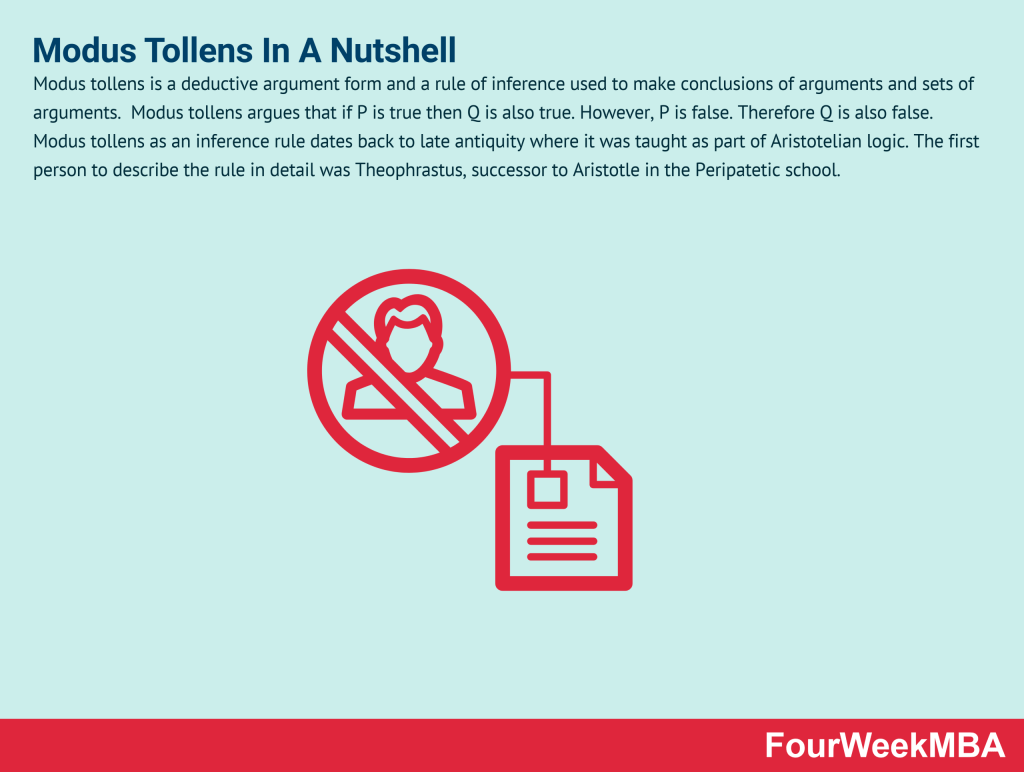
Five Cannons of Rhetoric

Communication Strategy

Noise if Communication

7 Cs of Communication

Transactional Model of Communication

Horizontal Communication

Communication Apprehension

Closed-Loop Communication

Grapevine In Communication

Integrated Marketing Communication

Social Penetration Theory

Hypodermic Needle

7-38-55 Rule

Active Listening

Main Free Guides:
- Business Models
- Business Strategy
- Business Development
- Digital Business Models
- Distribution Channels
- Marketing Strategy
- Platform Business Models
- Tech Business Model
More Resources

About The Author
Gennaro Cuofano
Discover more from fourweekmba.
Subscribe now to keep reading and get access to the full archive.
Type your email…
Continue reading
- 70+ Business Models
- Airbnb Business Model
- Amazon Business Model
- Apple Business Model
- Google Business Model
- Facebook [Meta] Business Model
- Microsoft Business Model
- Netflix Business Model
- Uber Business Model

- Calculators
- Swot Analysis
- Pestle Analysis
- Five Forces Analysis
- Organizational Structure
- Copywriting
- Research Topics
- Student Resources
Services We Provide

Resources We Provide

Login / Register

- Practical Explanation of 7Cs of Communication with Examples
“Communication works for those who work at it” John Powell
In every sphere of life ranging from personal relationships to highly complex strategic business planning, communication will always be more significant than we will ever know. Whenever we communicate with someone, we have an intended purpose behind it that we seek to fulfill via communication. In simpler words, all kinds of communication written or verbal have specific objectives. We want the recipient to clearly understand our message with no room for any misconceptions or misinterpretations.
Table of Contents
- Introduction
Correctness
Completeness, concreteness, consideration.
Otherwise, we may have to convey the same message over and over again and the outcome will be negatively affected. In fact, all of us have first-hand experiences of how miscommunication and communication gaps can affect our lives drastically. Quite relatable, isn’t it? Having said that, we need to ensure that we are always communicating in an effective manner to establish utmost understanding or call to action. We need to embrace effective communication both in our personal and professional lives to drive positive outcomes.
The real question is, what does it take to communicate in a decisive and conclusive manner? What are the dimensions of efficient communication? Is there a checklist we need to be looking at while communicating? Yes, there surely is and this checklist is referred to as the 7Cs of communication. This article analyzes each of these 7 components of communication in detail for lucid understanding so that you can enhance your communication skills in an amazing way. So, let us get underway without any further delay and know exactly what are the 7Cs of communication with example.
7 Cs of Communication: All that you need to know
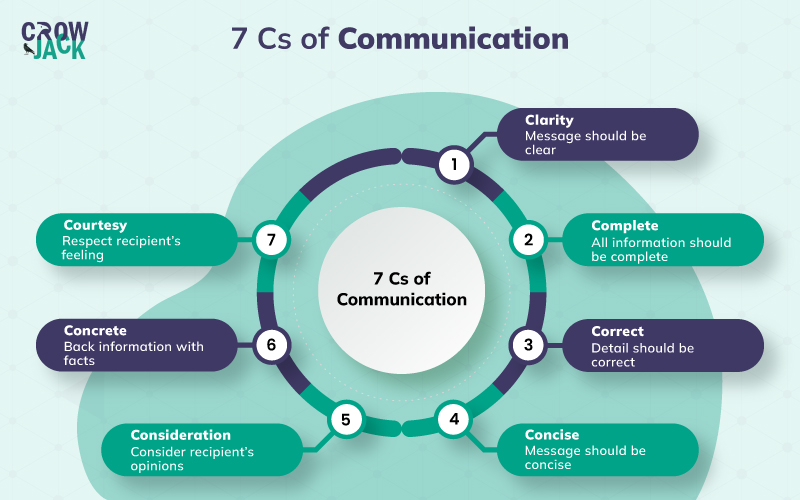
Listed below are the 7 most crucial traits of effective communication that hold the key to being a charismatic communicator who can lead the way for others. Let’s unwrap the 7Cs of effective communication one by one.
This dimension of communication is self-explanatory to a great extent, isn’t it? When you communicate a message to others whether in writing or verbally, the message must carry maximal clarity. To explain, the recipient must be clearly able to understand what you are trying to convey to them.
Unless there is utmost clarity, the recipient’s understanding will remain overshadowed by confusion. Further, these misunderstandings can lead to strains in personal relationships, ineffective business decisions, delays in planning or taking the right action. Having said that, you need to ensure that your message contains the greatest amount of clarity in terms of purpose, information, and what you expect from the recipient.
Example depicting the importance of clarity in communication: Let’s say the change leaders in an organization want to integrate automation into the operational capabilities of the company. Now, to get stakeholders involved in change management, they will need to clearly communicate the vision to employees. Here, it is important that they clearly explain to employees that automation is meant to boost employee productivity and not to replace employees. If this message is not clearly communicated, it will lead to large disengagement among employees and fears of job loss.
The second key trait of effective communication is correctness. As the term implies, the message should be conveyed to the recipient inclusive of the correct details and information. Besides, for optimized correctness, as a communicator, you also need to use the appropriate language while communicating your message. Also, it is such a key thing to communicate the right thing at the right time. Hence, it is also essential to remember that correct communication also ought to be well-timed.
Furthermore, it is also noteworthy that when you communicate correctly, your confidence and motivation get a great boost. You feel more accomplished as a communicator when you have the knack for driving a high degree of correctness in your communications.
Example depicting the importance of correctness in communication: Let’s say a student from China is applying to a Master’s program in the US for which the student needs to submit an SOP to the admission committee of a US university. SOP (Statement of Purpose) is the communication of a student’s personality and exposure to the admissions committee in the form of an essay usually. Now, the information that the student is adding to the SOP with respect to skills, internship experiences, and educational background has to be completely correct. Otherwise, the members of the admission committee would not clearly understand how the students’ skills and experiences are aligned with the course that he or she is applying for. Similarly, for every communication written or verbal, being correct is vital.
To be fair, in this highly competitive world, people do not have the time to engage in recurring conversations on the same topic. Thus, you need to ensure that your message contains all the relevant information, details, facts, and figures at once. Needless to say, when messages are communicated in entirety such that they include all the necessary information, they lead to quick decisions, brisk resolution of problems, and positive communication.
On the contrary, communications lacking the prerequisite details will lead to unprecedented delays in actions. So, in your personal as well as professional lives, you should always aim for framing and communicating complete messages with no loopholes.
Example depicting the importance of completeness in communication: Let’s say an analyst at a top MNC is tasked with conducting a PESTLE Analysis for the company to identify key external factors affecting its customer acquisition efforts. A week later, the analyst presents the documented PESTLE analysis to the top management. However, the analysis is not complete as it does not include the industry growth rates, inflation rates, emerging disruptive technologies, and other key details. Hence, the analysis does not offer any decisive insights to the top management as a lot of relevant information is missing.
Communications seem so much more impressive when facts and key details are established firmly with no scope of subjective interpretation. You would any day be more attracted to a communicator who puts forth concrete details rather than the one whose communication has loose ends, isn’t it?
So, the bottom line is that communication ought to be concrete with no room for misunderstandings. Understanding would by default be much greater when facts and figures speak for themselves. Concrete communications appeal more to the recipients and they are impressed by firm arguments. This is something you should surely acknowledge to be a great communicator. The better you align to the 7C’s of communication, the greater the success.
Example depicting the importance of concreteness in communication: Let’s say a management student has to work on a SWOT Analysis assignment. The task of the student is to conduct the SWOT analysis of Hewlett-Packard. Now, to present the analysis in the best possible form, the student should back the findings of the analysis with compelling figures and facts. The student should go through the annual statements of Hewlett-Packard to assess the financial position, the number of employees, and the supplier network of the company. These are the key internal factors that can be looked at as a brand’s strengths. Similarly, to assess the opportunities and threats, the student should look to include key industry trends, customer behavior trends, and statistics to back the arguments. In this way, through the analysis, the student can communicate concrete conclusions to the professor.
The next important thing about effective communication is that messages need to be straightforward, concise, and to the point. Long conversations have become a luxury in contemporary times when people are running against time. People hence subscribe to precise and concise conversations that highlight only the key details. In fact, you can also look at it from the viewpoint of Pareto’s 80-20 Rule . 20 percent of details in every conversation will ultimately account for more than 80 percent of the impact on the recipient.
When you keep it concise, it becomes easier for the recipient to understand the key details of the message. Also, you need to be considerate of the average attention span that humans have. The attention of recipients will be much higher in straightforward conversations while in long conversations elaborating on unnecessary details, the actual message is likely to be lost.
Example depicting the importance of being concise in communication: When you appear for an interview, recruiters are looking for precise details regarding your core competencies and traits. If you rather start elaborating on skills that are not relevant to the position you are applying for, you are not providing the concise information the recruiters are looking for. It is quite possible that by doing so, you can create disinterest among recruiters and that can even cost you the opportunity.
Effective communication is also a lot synonymous with taking the recipients’ perspectives and viewpoints into consideration. The central idea is to make conversation engaging to optimize their impact and to keep the recipients interested. For that, you have to ensure that communication is two-way and you encourage your audience to share their opinions.
Further, when they express their perspectives, you need to show consideration for their mindsets, cultural backgrounds, and preferences. You may or may not agree with them but you can surely be considerate enough.
Example depicting the importance of consideration in communication: Let’s say an employer wants to bring the problem of high client attrition rates to the attention of employees. Rather than just stating the issue and asking the employees to boost efforts, the employer should rather have an inclusive approach and discuss the issue with employees. The employer should consider what employees have to say about the reasons for high client attrition and the possible solutions. In this way, an inclusive conversation can lead to better-informed decisions taking different perspectives into consideration for efficient strategic planning .
The seventh dimension in the 7Cs of communication is that of courtesy. It simply states that communicators need to be courteous toward the feelings and emotions of the recipients that further inspire their viewpoints and thought processes. To add, as a communicator, you should show great respect for your audience and their opinions. When you do so, communications come out to be highly positive and inspire optimism among recipients.
Now you may feel that courtesy can only be expressed in verbal communications as feelings are not really evident in written communications. However, that is not entirely true. Even in written communications, you can rely on the appropriate choice of words and a respectful tone to manifest courtesy.
Example depicting the importance of courtesy in communication: It happens so often that we find ourselves at odds with our parents because of generational differences. What may seem a right choice to us may seem a rather risky decision to them. When we have to convey our choices to them, we need to extend great respect to their feelings and opinions. This is what will encourage them to pay heed to our choices and perspective and offer respect to them in lieu of the respect that we extend. In this way, we can make ourselves better understood to them without offending them or deteriorating the relationship. Makes great sense, isn’t it?
To conclude, communication skills are among the most desirable and worthiest interpersonal skills in this era that depends a lot on knowledge and information sharing. If you can excel as an effective communicator, you will always be able to hold on to a competitive advantage over others when it comes to your career. Besides, even in the context of your personal relationships, being a good communicator will also help you in holding on to your loved ones. For such efficacy in communications, all that you need to do is rely on the 7C’s of communication.
Can the 7Cs of Communication be useful in resolving conflicts and misunderstandings?
Yes, by ensuring clarity, correctness, and completeness, the 7Cs can help in resolving misunderstandings and reducing conflicts.
Can the 7Cs of Communication be used to enhance written communication?
Yes, the 7C principles can improve written communication by making it clear, concise, and coherent, ensuring the message effectively conveys the intended information.
Copyright © 2023 CrowJack. All Rights Reserved

The 7 C’s of Effective Communication
By Akshita Kannan
In our school curriculum, we learn about specific subjects, facts, and data, but don’t really learn about necessary life skills such as effectively communicating our ideas. As students and as workers in the future, we will spend our day communicating through writing emails, speaking in meetings, debating with colleagues and peers, and creating presentations. The 7 C’s of communication ensures clear and effective communication of our thoughts by being: clear, concise, concrete, correct, coherent, complete, and courteous.
Firstly, we need to be clear about our main idea or message. By being clear, we simplify difficult ideas by using simple language. Avoid jargon or any other confusing language. Ask yourself, “What is your purpose in communicating with this person?” Try to organize ideas in each sentence and make sure your audience has no doubts and won’t need to “read between the lines.”
Along with being clear, we need to be concise and respect our audience’s time and attention. By being concise, we stick to our main idea instead of ranting and getting sidetracked. Make sure you don’t have any unnecessary adjectives, filler words (e.g uh, uhms, like, etc), repeating ideas, and phrases like “literally,” “basically,” and “ I mean.” By making our ideas concise, we also emphasize the 1st C of being clear.
Next, we need to make sure our main point is concrete . The goal is to not only explain the idea to our audience but also extend their knowledge with comparisons, charts, and images. Make sure your audience has a clear picture of your message. We want our communication to be “solid,” with vivid facts and details. Focus on your main idea and avoid having too many supporting details.
Once our idea is concrete, it’s important that we communicate our ideas correctly . This means your communication “fits your audience” and is free of errors. Make sure the audience can understand the technical terms used. In written communication, check for mistakes in grammar, and verify that names/titles are spelled properly.
After these are implemented, effective communication fundamentally calls for coherent ideas. This means that all of our ideas flow logically. Make sure “all points are connected and relevant to the main topic.” Most importantly, make sure your tone and stance stay consistent.
Our message also needs to be complete . We need to make sure our audience is fully informed and understands the context of what we’re communicating. If a “call to action” is necessary, we need to clearly state what we want our audience to do. Make sure all relevant information to our main idea is communicated.
Lastly, remember to communicate your ideas courteously . Be empathetic to the audience and avoid “hidden insults or passive-aggressive tones.” We want to be cordial, open, and sincere to our audience to earn their trust and engagement. Make sure to consider your idea or message from the audience’s point of view and show your audience that you respect them.
There are numerous variations to the 7 C’s of communication that use various orders and words. Outside of this list, numerous people call for credibility, or making sure your message improves your respect and others’ trust in you, and creativity, to keep your audience engaged, in the 7 C’s. Ultimately, any variation of the 7 C’s of Communication serves to increase the effectiveness of your communication. While you communicate daily, try to put the 7 C’s into practice to keep improving your communication.
References:
https://www.cambridgeenglish.org/blog/the-seven-cs-of-effective-communication/
https://edexec.co.uk/the-seven-cs-of-communication/
Share this:
- communication
- high school
- soft skills
Leave a Reply Cancel reply
Your email address will not be published. Required fields are marked *
Save my name, email, and website in this browser for the next time I comment.
Main navigation
The seven cs of effective communication.

Helping teachers talk to parents about A2 Key for Schools, B1 Preliminary for Schools and B2 First for Schools
When we think of the people involved in teaching and learning, we tend to think of the teachers and the learners. Yet, in the context of young learner and teenage education this leaves out a very important stakeholder – the parents or carers!
Parents have a very keen interest in what happens with the learning of the children in their care. As a teacher, having open and constructive channels of communication with parents is essential. Having an effective strategy to bring them into the classroom and the learning process is very often the key to success.
Follow our seven-point checklist when you plan, write and revise your communications. It will help you explain to parents exactly what you need them to know so they become your partners in their child’s learning journey.
It is important to be clear about our aim and message when we are communicating with someone. Clear communication explains complicated ideas in ways that you can understand using simple and familiar language. It leaves no doubts or ambiguity about the purpose of the communication.
Tip: Start with a list of the things that you need parents to know, agree to or understand. Then eliminate anything on the list that you think they will not be familiar with. Do they know what ‘communicative competence’ or ‘B1 on the CEFR’ mean? Probably not … so don’t include it!
2. Concrete
Once you have removed jargon, how do you fill in the gaps? Good communication is essential: your challenge is to find a new way to say these things that gives a clear and specific picture. An explanation can help, but an image or a comparison is even better!
Tip: Imagine that learners are football players – we want them to know the rules of the game, but we are not interested in how well they can recite them. Instead, we want to see how they use them in a real match, and how they can use them to solve the problems they face on the pitch. That is what we call competence.
Stick to the point. Be brief. This shows respect for our audience (you appreciate that their time is valuable), but it also helps to keep us clear and precise.
A good example of concise information is the Can Do statements that we use to describe learner competence. When we say that a B1 Preliminary candidate ‘CAN understand routine information and articles’ and ‘CAN understand straightforward instructions or public announcements’ we create a simple image.
Tip: The descriptors in our handbooks for teachers will give you plenty of examples ready for when you talk to parents about what their child CAN do at each level. Search to find all our resources for teachers .
4. Considerate
Tone and register are important. Too formal and you will come across as distant and unapproachable; too casual and you will not sound professional. Consider the age, style and expectations of the parents – look at yourself through their eyes and meet their expectations.
Tip: Imagine what the parents will ask you about their child’s progress and prepare what you are going to say. You could use the results of homework or practice tests to show parents how their child is progressing and that they are ready to take an exam.
5. Coherent
Coherent communication is about being logical and effective. A good argument must feel like the shortest, easiest line from idea A to idea B – no detours and no gaps. If you are talking about why taking an exam at the end of a course is important, be sure that all your points are connected and relevant to your main argument.
Tip: For example, you could structure your points as follows: ‘The national curriculum says that by the end of secondary school learners should reach a B2 level of English. It is very important for the school and the families to feel confident that our students are on track to meet that very important goal. Taking a Cambridge English Qualification is an excellent way to increase their confidence. We recommend that your child takes A2 Key for Schools and B1 Preliminary for Schools at the end of years 2 and 4.’
Correct communication is appropriate and error free – especially in writing. This includes proofreading, but also making sure that any details (such as names of exams, dates and addresses) are correct and consistent throughout your message.
Tip: It helps to have a second, fresh pair of eyes. Ask a colleague who does not know what you are trying to communicate to read the message, highlight any issues and then explain it back to you. If they can do it, then the parents can too!
7. Complete
Good communication will tell parents everything that they need to know, and also what they are expected to do next. Have you ticked all the items on the list in the tip in the first point? If you need parents to do something, did you mention exactly what it is?
Tip: Remember the Rule of Three. No message is complete unless you have mentioned the main ideas three times: once at the introduction (‘I am going to tell you about B1 Preliminary’), then in the development (‘This is what you need to know about B1 Preliminary’) and once more at the end (‘Now that you know this about B1 Preliminary, remember to …’).
Learn more about how you can talk to parents about their child’s progress in our recent webinar for teachers by Pablo Toledo.
Watch our webinar
Find lots more support and resources about talking to parents about Cambridge English Qualifications .
Related Articles
Five ways a celta qualification will further your career.

Choosing the right English language teaching course for you can be a challenge. Here are five reasons why we recommend taking an official Certificate in Teaching English to Speakers of Other Languages (CELTA) qualification from Cambridge.
Real life English language skills for business – how Linguaskill can help

Linguaskill is a quick and convenient online test to help organisations check the English levels of individuals and groups of candidates, powered by Artificial Intelligence technology. It tests all four language skills - speaking, writing, reading and listening - in modules.
Linguaskill: the flexible option for language testing

Linguaskill’s modular testing offers a flexible option to test takers. If they need to improve their score in a particular skill, then they can take that part of the test again. Their other scores are unaffected and they won’t have to retake the other three sections. Linguaskill’s flexibility benefits institutions and employers, too. Let’s take a look.
Mediation skills in the English language classroom

Taking information, summarising it, and passing it on is an example of what linguists call mediation, and it is a key skill for language learners at all levels. It’s the subject of the latest Cambridge Paper in ELT which looks at some of the best strategies teachers can use to teach and assess mediation skills.
Home Collections General Communication Powerpoint Templates 7Cs Of Communication Skills
Stunning 7Cs Of Communication Skills PPT And Google Slides
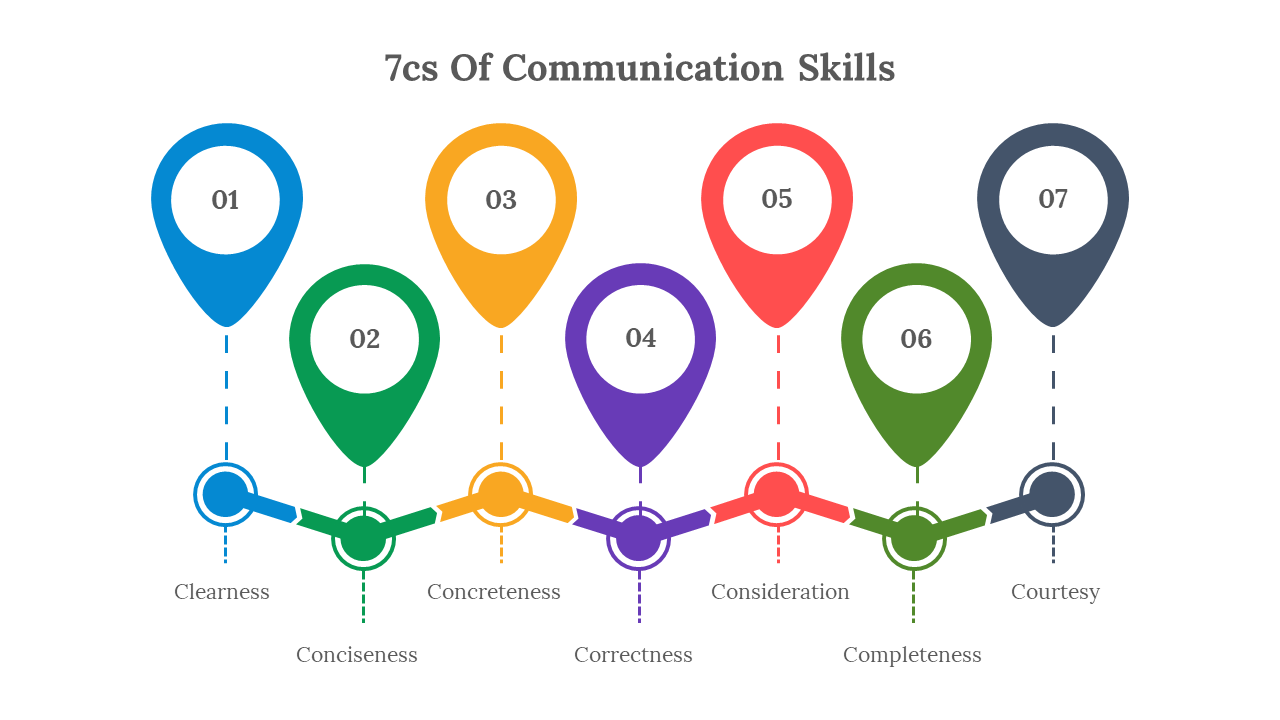
7Cs Of Communication Skills Presentation Slides
Effective communication with our meticulously designed "7C's of Communication PowerPoint Presentation." This dynamic template serves as a comprehensive guide to mastering the fundamental principles of clear and concise communication, delving into vital elements like clarity, conciseness, concreteness, and more. It not only imparts theoretical knowledge but also provides vivid Seven Cs examples, illustrating their practical application in various scenarios. This resource proves invaluable for those aiming to enhance their communication proficiency through the Seven Cs of effective communication. This versatile template is an indispensable resource for professionals, students, educators, and anyone seeking to elevate their communication skills. It equips presenters with fully editable slides, allowing customization to suit specific needs, and ensuring a seamless flow of information and captivating visuals for optimal audience engagement. Encourage your audience to harness the potential of this template and witness firsthand how it empowers them to communicate with excellence, leaving a remarkable and lasting impact. Through this resource, individuals can master the art of communication, enhancing both their Effective 7Cs communication and 7Cs communication examples, making a significant impact in various spheres of life.
Features of the templates:
- 100% customizable slide and easy to download.
- Easy to change the slide's colors.
- The template contains 16:9 and 4:3 formats.
- Highly compatible with PowerPoint and Google Slides.
- This slide has a colorful design pattern.
- Communication Powerpoint Templates
- 7Cs Of Communication Skills
- 7Cs Of Communication
- Communication Skills
- 7Cs Of Effective Communication Skills
- Effective Communication
- Google Slides
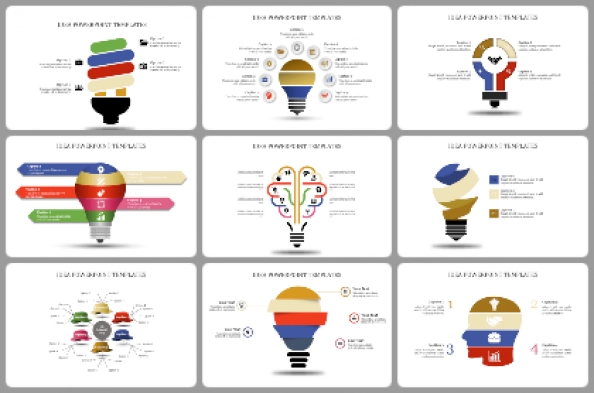
684+ Templates
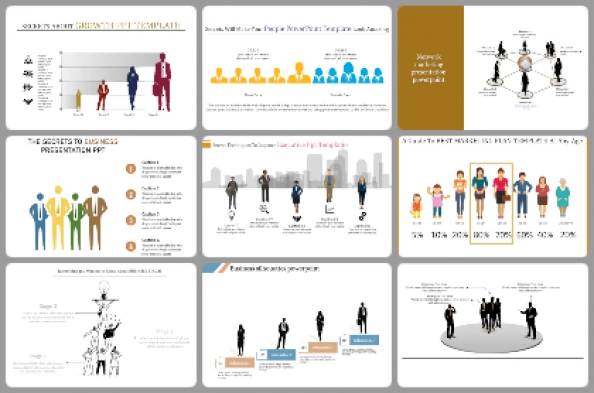
Silhouettes
63+ Templates
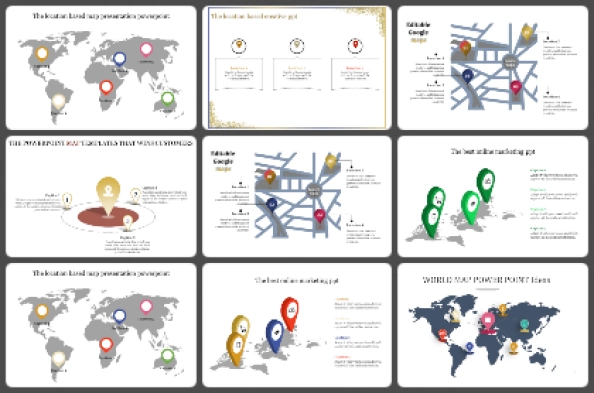
37+ Templates
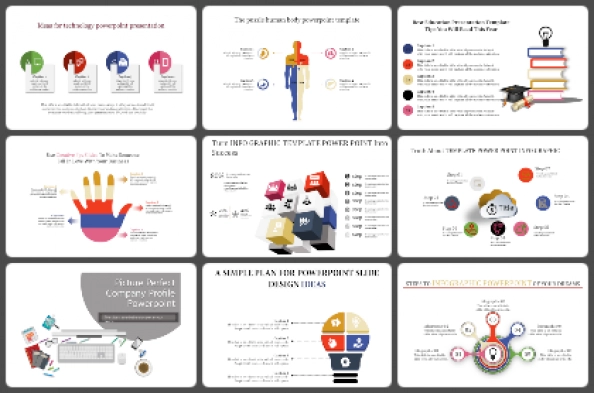
314+ Templates
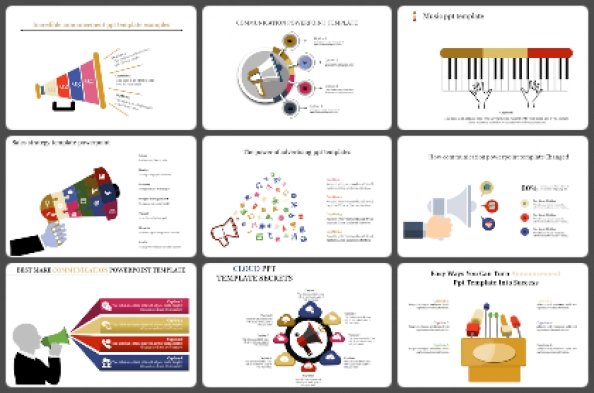
communication
200+ Templates
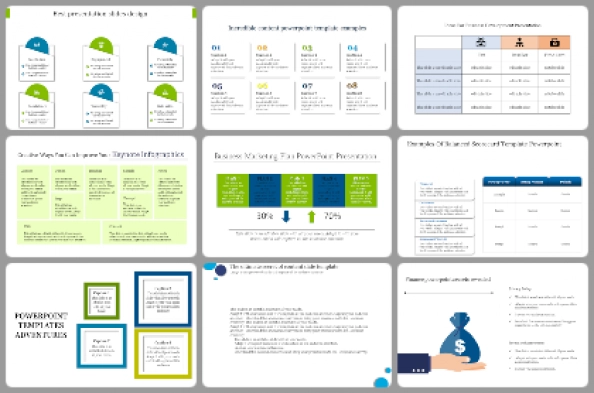
141+ Templates
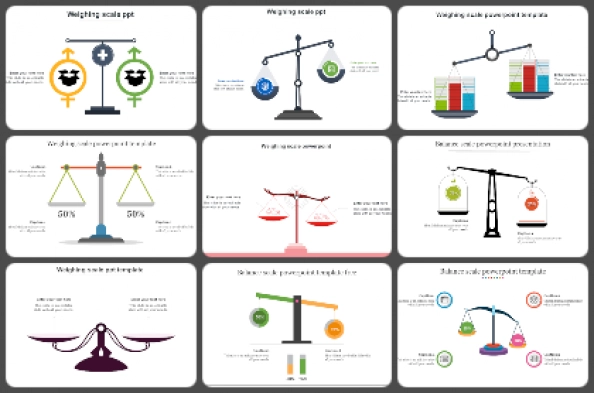
Weighting Scale
67+ Templates
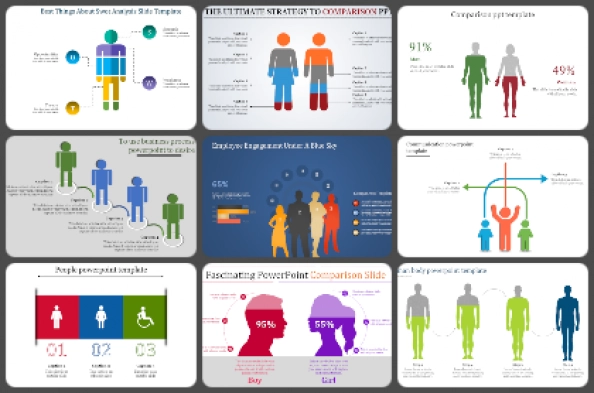
71+ Templates
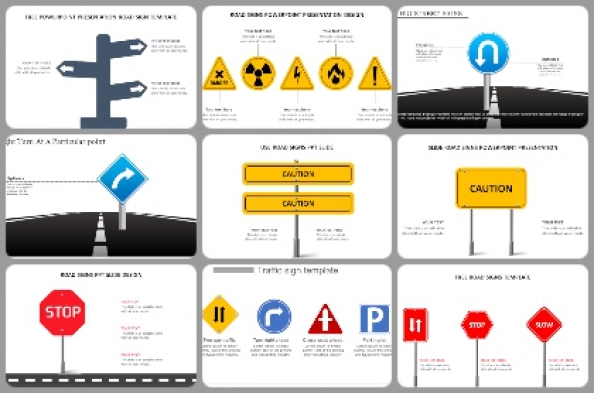
27+ Templates
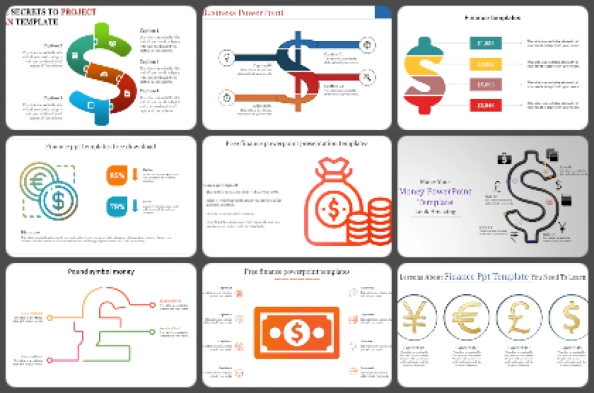
33+ Templates
You May Also Like These PowerPoint Templates


The 7 C’s Of Communication
Do you remember the last time your manager didn’t approve your leave or your client did not come on board…

Do you remember the last time your manager didn’t approve your leave or your client did not come on board the project you were presenting? Have you ever thought about why that happened?
One major reason why we may not be able to persuade someone to see our point of view is our lack of proper communication skills. This is where the seven C’s of communication come into play. They will help you persuade and make people see your point or agree with you on a certain subject.
What Are The 7 C’s Of Effective Communication?
The 7 c’s of communication with examples.
Following the 7 C’s of communication is a way to ensure effective business communication . Harappa Education’s Speaking Effectively course can make your communication effective, clear, and concise so you can succeed at work. You can use the Pyramid Principle to structure your ideas for more effective communication. The Pyramid Principle says that you should state the most important thing first and then back it with supporting arguments.
Speech, both in personal and professional life, holds immense power. It can persuade, convert, and compel. Here, we explain the 7 C’s of communication with examples for you.
Completeness
Sometimes we may start talking in English even with a person who may not be well-versed with the language. This scenario is quite common in day-to-day life. Also, as a conversation flows, we tend to jump from one topic to another, leaving each message incomplete.
When you are communicating with someone, your message should be complete and supported with facts and explanations.
Concreteness
Remember the Knock app that came a few years ago? The company said it all with the tagline, ‘Unlock your Mac by knocking your iPhone’.
Precise and concrete messages mean more effective interaction with your audience. Avoid ambiguity in your messages to help your audience understand your point easily.
While you are crafting your message, make sure you consider the feelings and points of view of the receiver. After all, the success of your speech will be judged on how much your listener has understood.
Do you often get lost in the flow of conversation and stretch it longer than necessary?
Keep the message, impactful, short, and simple for the receiver to understand it clearly. It is important that the message be concise yet complete.
Consideration
Have you ever attended an event or a business meeting where you feel bored or left out? The strength of a powerful speaker or communicator is that she relates to his audience and makes them feel involved.
Professional knowledge, the level of education, and interests play an important role in helping you relate to your audience and convey the proper message.
Correctness
You should always run a fact check on your presentation. If the points you present are game-changing but are based on incorrect facts, they won’t have the required impact.
For instance, fake messages going viral on social media platforms have, at times, led to panic in society.
No matter what subject, language, or medium you choose, it’s essential that the message you convey is correct. Along with the correct facts, you must also ensure correct spelling and grammar.
Even if you follow all the C’s of communication mentioned above, your message will not make a strong impact if it’s unclear.
Make sure you keep your message short and clear so that it has a lasting impact on the listeners.
Mark the seven C’s of Communication in your skill-learning to-do list as they will take you a long way. Head straight to Harappa Education’s Speaking Effectively and Writing Proficiently courses to improve your oral and written communication skills.
Explore blogs on topics such as the process of communication , the elements of communication , what is grapevine communication , the channels of communication , and the levels of communication in our Harappa Diaries section and learn how to deliver information effectively.

- Organizational Behaviour
- Business Communication
Seven C’s of Effective Communication
There are 7 C’s of effective communication which are applicable to both written as well as oral communication. These are as follows:
Awareness of these 7 C’s of communication makes you an effective communicator.
Related Articles
- Communication Barriers
- Effect of Communication Barriers
- Overcoming Communication Barriers
- Corporate Meetings
- Conducting Effective Meetings
View All Articles
Authorship/Referencing - About the Author(s)
The article is Written and Reviewed by Management Study Guide Content Team . MSG Content Team comprises experienced Faculty Member, Professionals and Subject Matter Experts. We are a ISO 2001:2015 Certified Education Provider . To Know more, click on About Us . The use of this material is free for learning and education purpose. Please reference authorship of content used, including link(s) to ManagementStudyGuide.com and the content page url.
- Business Communication - Introduction
- Communication Process Components
- Oral Communication
- Written Communication
- Non Verbal Communication
- Importance of Communication
- Communication Flows
- Writing Effectively
- Effective Writing for Results
- How to make a Great Presentation?
- Body Language in communication
- Grapevine Communication
- Feedback Communication
- Seven Cs of Communication
- Informal Networks in Organizations and Organizational Effectiveness
- Intercultural Communication
- Guidelines for Effective Communication
- Effective Communication For Students
- Communication Skills For Professionals
- Effective Listening Skills
- Effective Presentation Skills
- Effective Report Writing
- Resume Writing
- Format of a Resume
- A Resume - What it is and Why You Need One ?
- Different Types of Resume
- The Importance of a Resume
- How to Write an Impressive Resume
- Resume Mistakes to Avoid
- How to Make Your Resume Stand Out and a Winning One
- How to Address Career Gaps and Other Career Weaknesses in Your Resume
- Writing a Resume in the Absence of Strong Work Experience
- Tips for Providing the Resume a WOW Factor
- Job Interview Tips
- Business Negotiations
- How to Conduct High Stakes Negotiations in the Digital Age without Being Short-changed

IMAGES
VIDEO
COMMENTS
The 7 Cs provide a checklist for making sure that your meetings, emails, conference calls, reports, and presentations are well constructed and clear - so your audience gets your message. In this article and in the video, below, we'll look at each of the 7 Cs of Communication, and illustrate each element with both good and bad examples.
Courtesy. Clarity. Consideration. Concreteness. These strategies apply to both written and oral communication. The one who is aware of and makes use of these 7C's in a sensible manner can become a good and effective communicator. 1. Completeness. This is one of the most significant aspects of effective communication.
7'cs of effective communication Documents.mx 7cs of-communication-presentation. ... Before you teach the oral communication component in your business writing class, check out this presentation for a wealth of resources about in-person and web presentations, public speaking, and presentation visuals, to name only a few. ...
The 7 Cs of communication can be applied to many interactions. (Foto: CC0 / Pixabay / jamesoladujoye) Poor communication which does not encompass the 7 Cs of effective communication can negatively impact a huge array of our professional and personal dynamics. Financially, it is estimated to cost businesses over a trillion dollars every year. Other statistics suggest that 86 percent of ...
Personal Growth: Effective communication contributes to self-awareness. It encourages reflection, active listening, and empathy, allowing individuals to better understand themselves and others. Clear thinking promotes personal development and emotional intelligence. Effective Communication For the Future of Work.
The 7cs of effective communication are Concise, Complete, Coherent, Clear, Courteous, Concrete and Correct. 1. Concise. The longer your message is, the harder it can be for the audience to remember. It's easy for people to lose attention when your message is long and includes a draggy explanation.
An effective way to prepare a remarkable presentation is to use the seven C's: clear, compelling, customer-focused, concise, contagious, crafted (with a purpose), and call to action. Clear: Clear thinking leads to presentation clarity. It's too easy to open your PowerPoint before your mind. Think before you touch the keyboard.
This means having a friendly, open, and honest tone, and avoiding hidden insults or a passive-aggressive tone. Always keep your audience's viewpoint in mind, and show that you empathize and understand its needs. For further examples of how you can apply the 7 Cs to your communications, read the article that accompanies this video.
The seven C's of communication is a list of principles for written and spoken communications to ensure that they are effective. The seven C's are: clear, correct, complete, concrete, concise, considered and courteous. Summary by The World of Work Project. You can learn more broadly about communication in our podcast on the subject.
Provide specific and precise information: Clearly convey your message by providing specific details, facts, and examples that support your main points. Tailor your message to the audience: Consider the knowledge and background of your audience and adapt your communication style and language accordingly. Example: When presenting a new project ...
Oral Communication MELC 1 DAY 2 A video lesson that discusses about the 7Cs of Communication. Reviews on Process, Characteristic and Nature of Communication...
Using the C's of communication can improve your dialogues, writing and other types of professional communications. This list is beneficial if you want to make a positive impression in the workplace. Here are the seven Cs of communication: 1. Concise. Concise statements often have a greater impact on listeners.
The 7 Cs of Communication, namely clarity, completeness, conciseness, concreteness, consideration, concreteness, and courtesy, offer a systematic approach to enhancing communication effectiveness. This model ensures that messages are articulated clearly, received accurately, and contribute to meaningful interactions.
With that consideration done, you can use the 7 Cs of Communication - Complete, Concise, Considerate, Clear, Concrete, Courteous and Correct - to frame what you say or write. 1. Complete. "Effective communication is 20% what you know and 80% how you feel about what you know.". - Jim Rohn. Complete communication is not information ...
Oral Communication: Apply the principles during presentations, speeches, meetings, and conversations. Advertising and Marketing: Craft advertisements, marketing messages, and promotional materials that adhere to the 7 Cs for maximum impact. Customer Service: Provide clear and courteous responses to customer inquiries or issues.
Completeness. Concreteness. Concise. Consideration. Courtesy. FAQs. Otherwise, we may have to convey the same message over and over again and the outcome will be negatively affected. In fact, all of us have first-hand experiences of how miscommunication and communication gaps can affect our lives drastically.
Key Points We can spend almost our entire day communicating. So, how can we provide a huge boost to our productivity? We can make sure that we communicate in the clearest, most effective way possible. This is why the 7 Cs of Communication are helpful. The 7 Cs provide a checklist for making sure that your meetings , emails , conference calls , reports , and presentations are well constructed ...
As students and as workers in the future, we will spend our day communicating through writing emails, speaking in meetings, debating with colleagues and peers, and creating presentations. The 7 C's of communication ensures clear and effective communication of our thoughts by being: clear, concise, concrete, correct, coherent, complete, and ...
That is what we call competence. 3. Concise. Stick to the point. Be brief. This shows respect for our audience (you appreciate that their time is valuable), but it also helps to keep us clear and precise. A good example of concise information is the Can Do statements that we use to describe learner competence.
Getting to the end of your message quickly and efficiently is essential. Being concise is one of the most important 7cs of communication. Avoid repetitions of the information. It saves your time ...
7c Communication Presentation Slides. Embark on a journey of effective communication with our meticulously crafted "7C's of Communication PowerPoint Presentation." This dynamic template serves as a comprehensive guide to mastering the fundamental principles of clear and concise communication, covering key elements such as clarity, conciseness ...
7Cs Of Communication Skills Presentation Slides. Effective communication with our meticulously designed "7C's of Communication PowerPoint Presentation." This dynamic template serves as a comprehensive guide to mastering the fundamental principles of clear and concise communication, delving into vital elements like clarity, conciseness ...
Make sure you keep your message short and clear so that it has a lasting impact on the listeners. Mark the seven C's of Communication in your skill-learning to-do list as they will take you a long way. Head straight to Harappa Education's Speaking Effectively and Writing Proficiently courses to improve your oral and written communication ...
There are 7 C's of effective communication which are applicable to both written as well as oral communication. These are as follows: Completeness - The communication must be complete. It should convey all facts required by the audience. The sender of the message must take into consideration the receiver's mind set and convey the message accordingly.